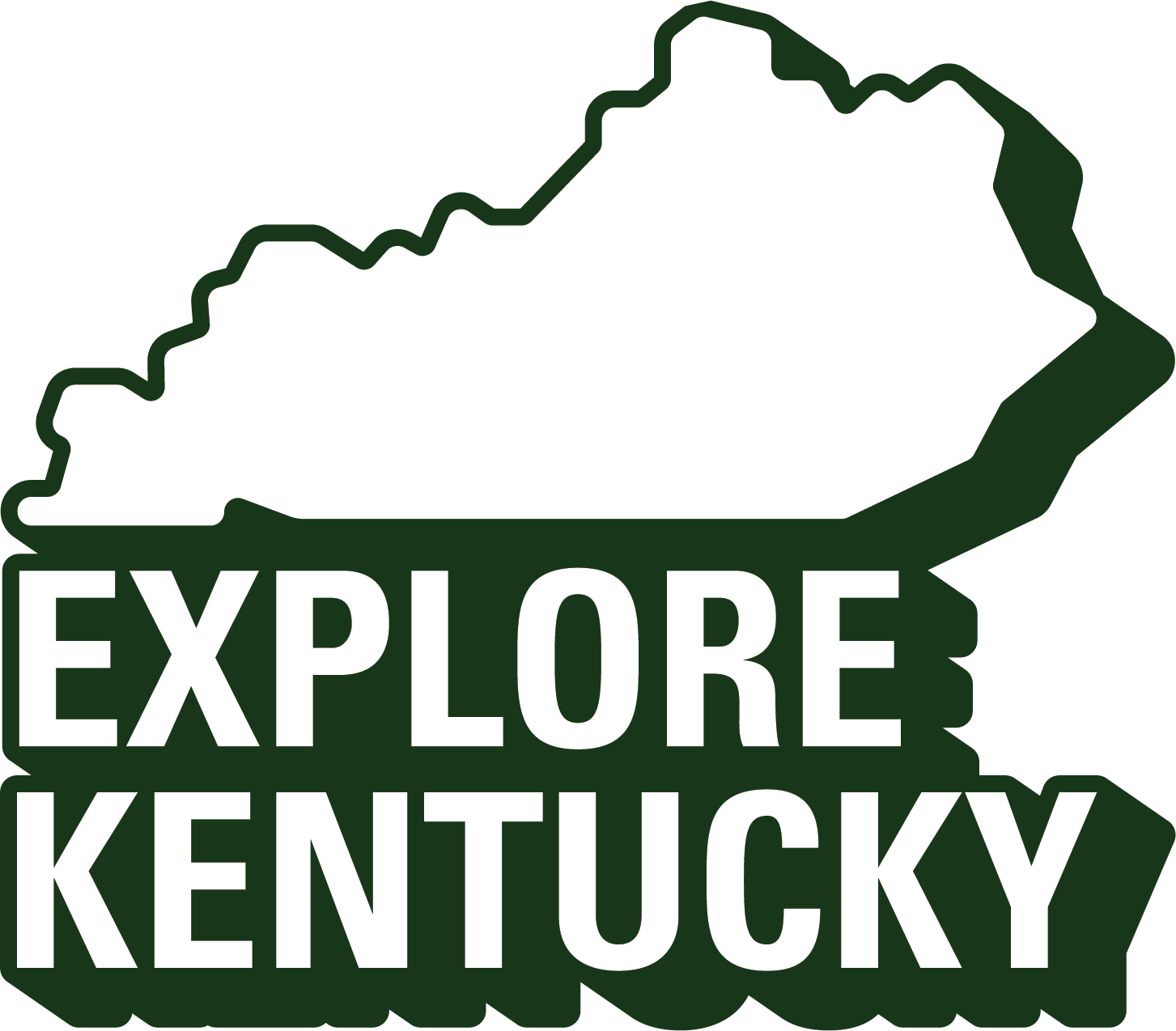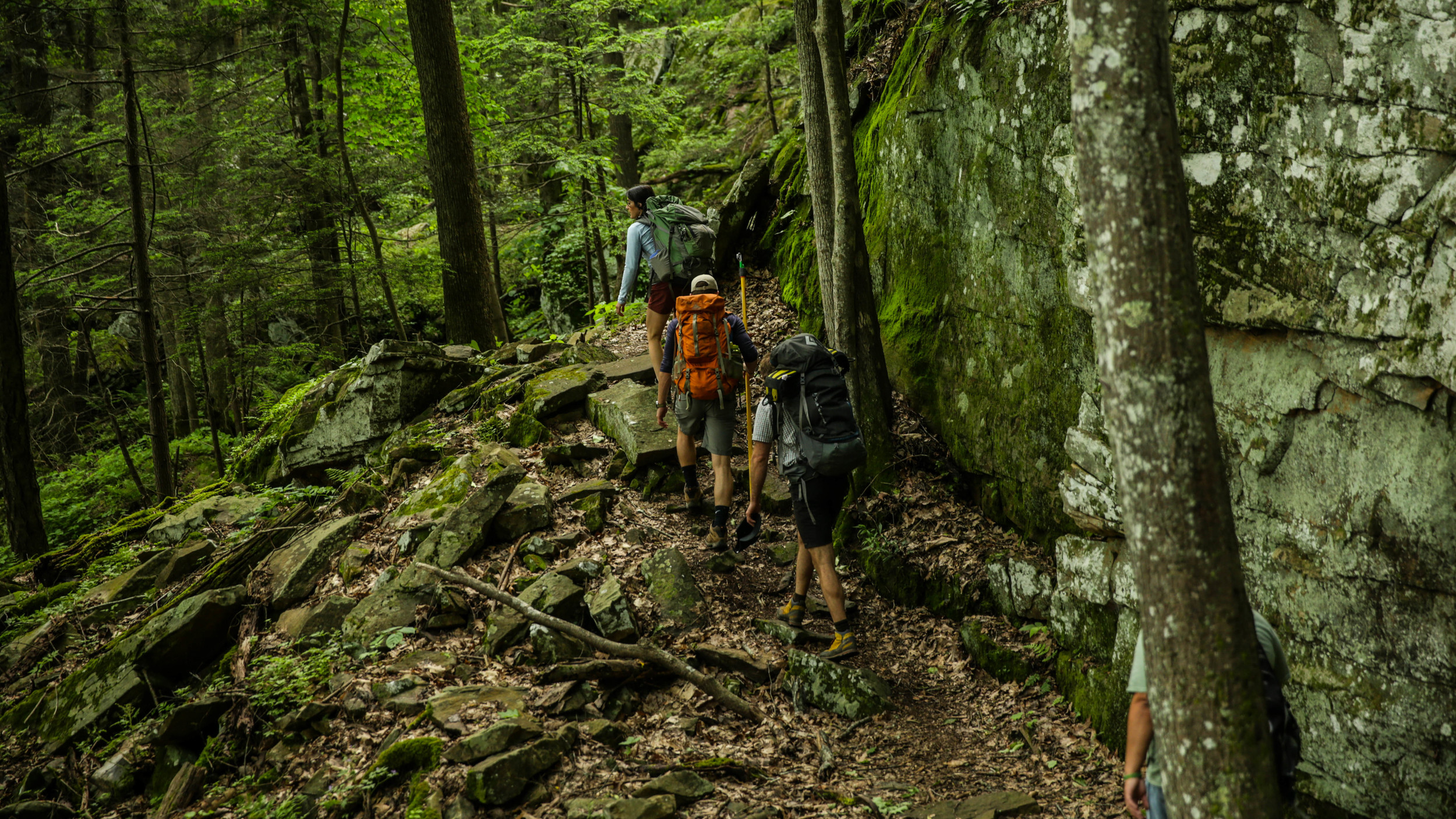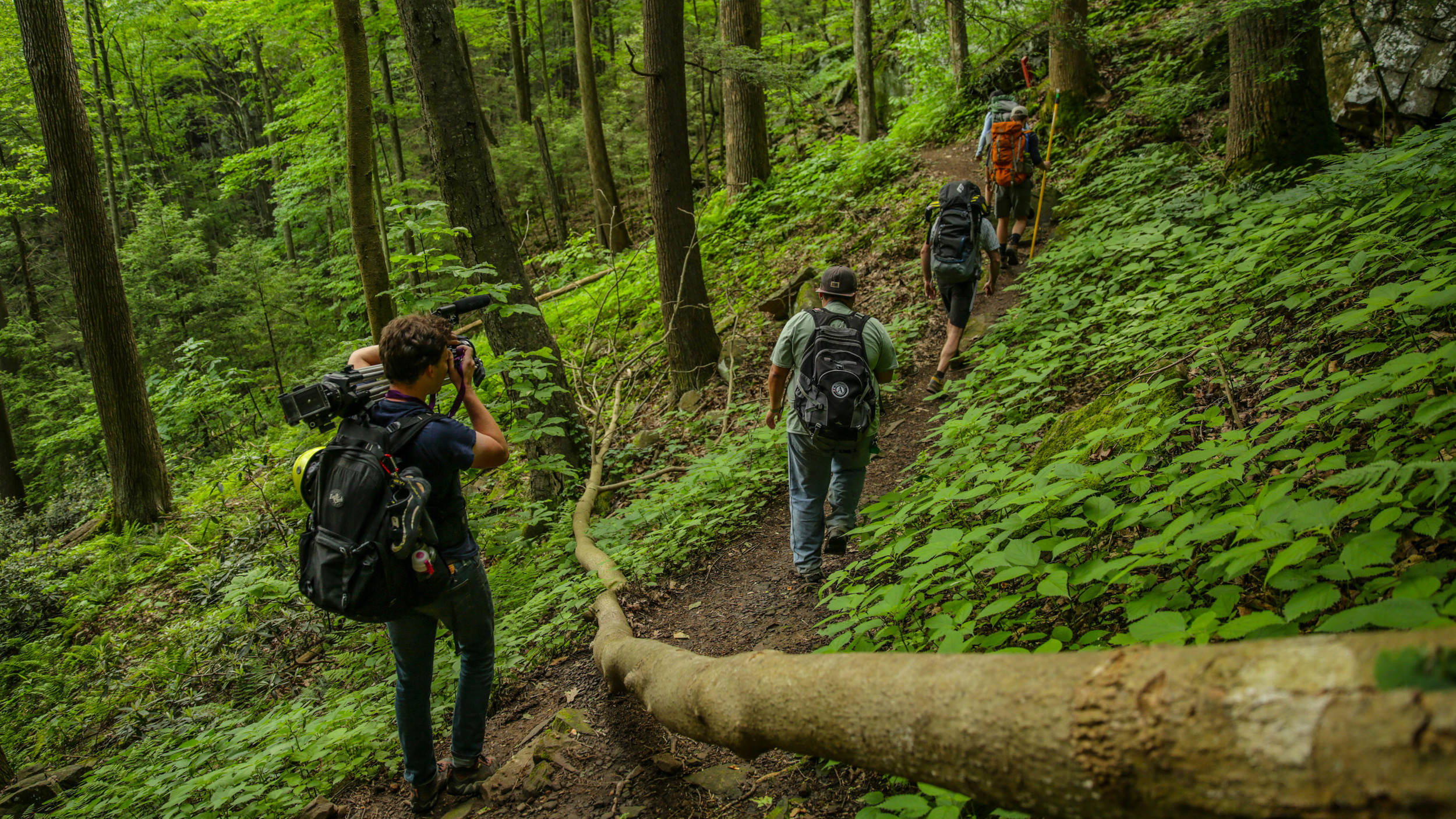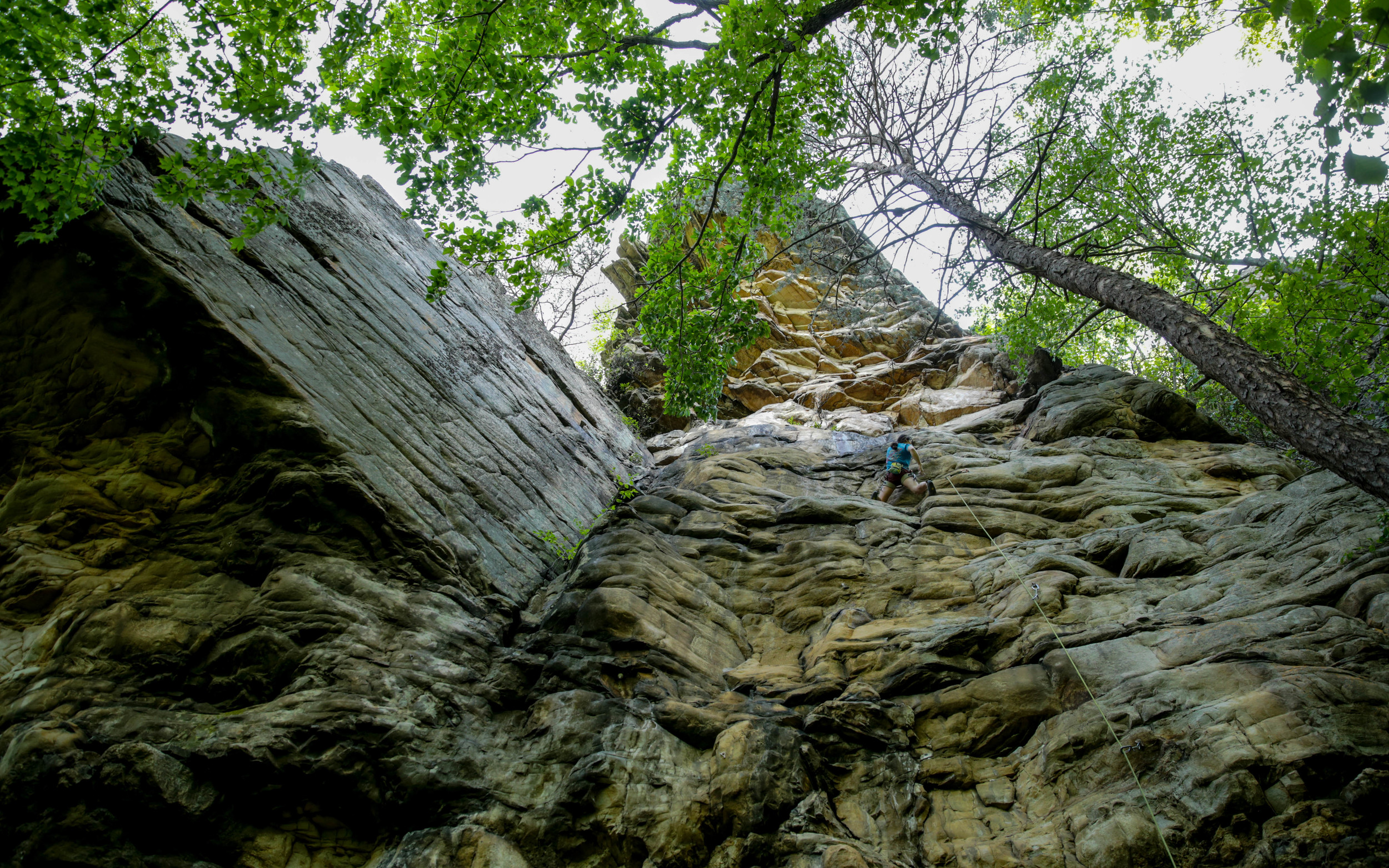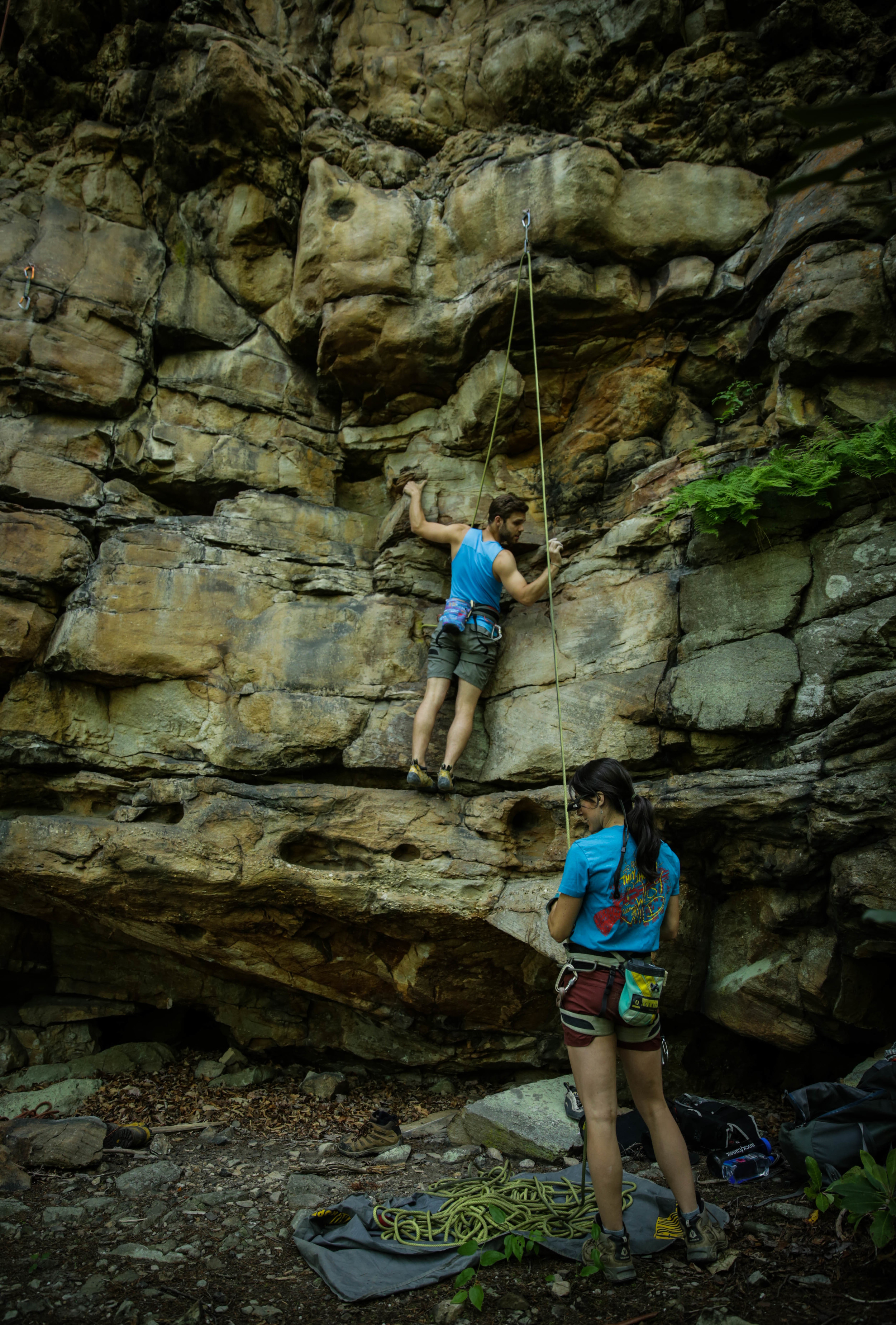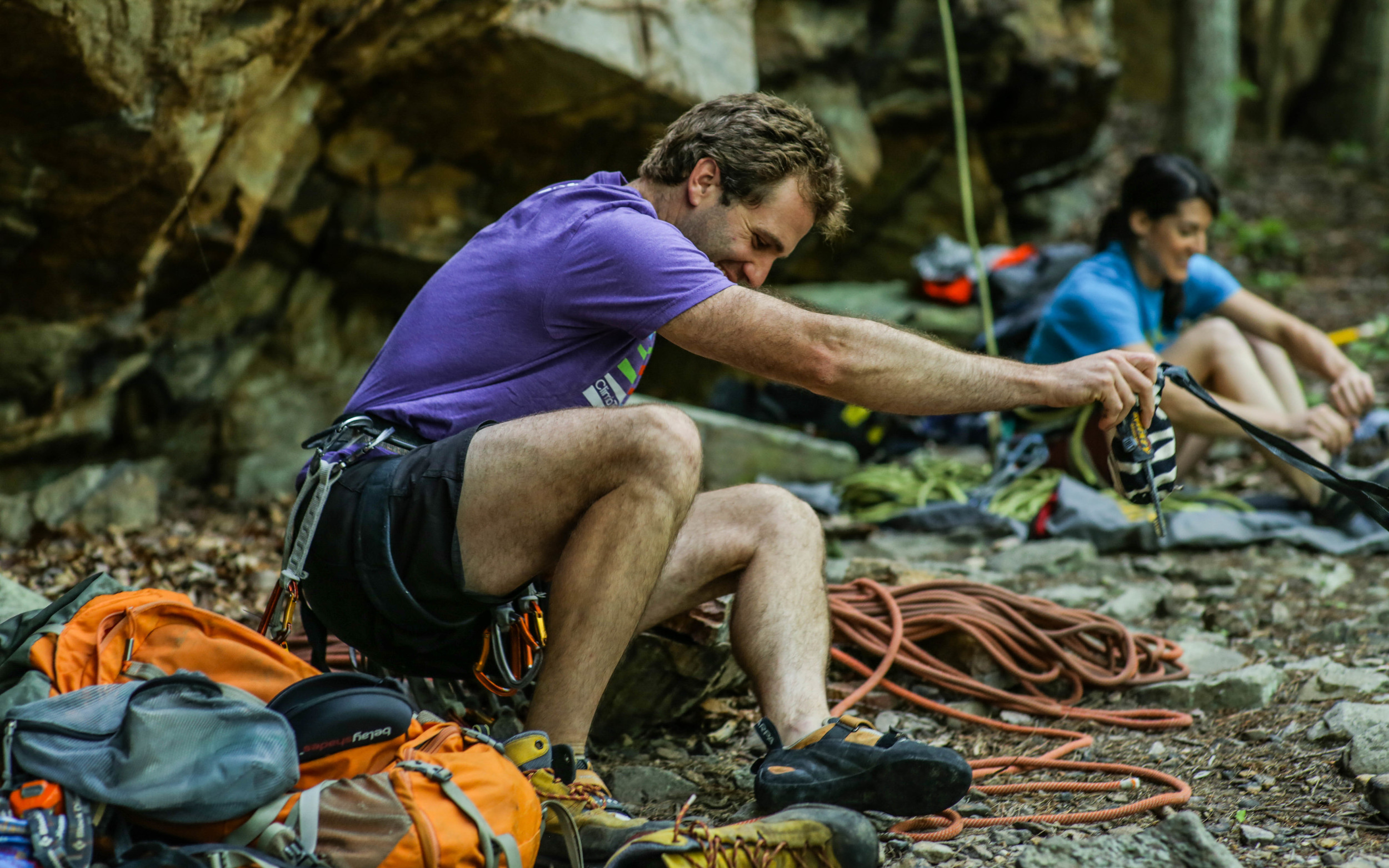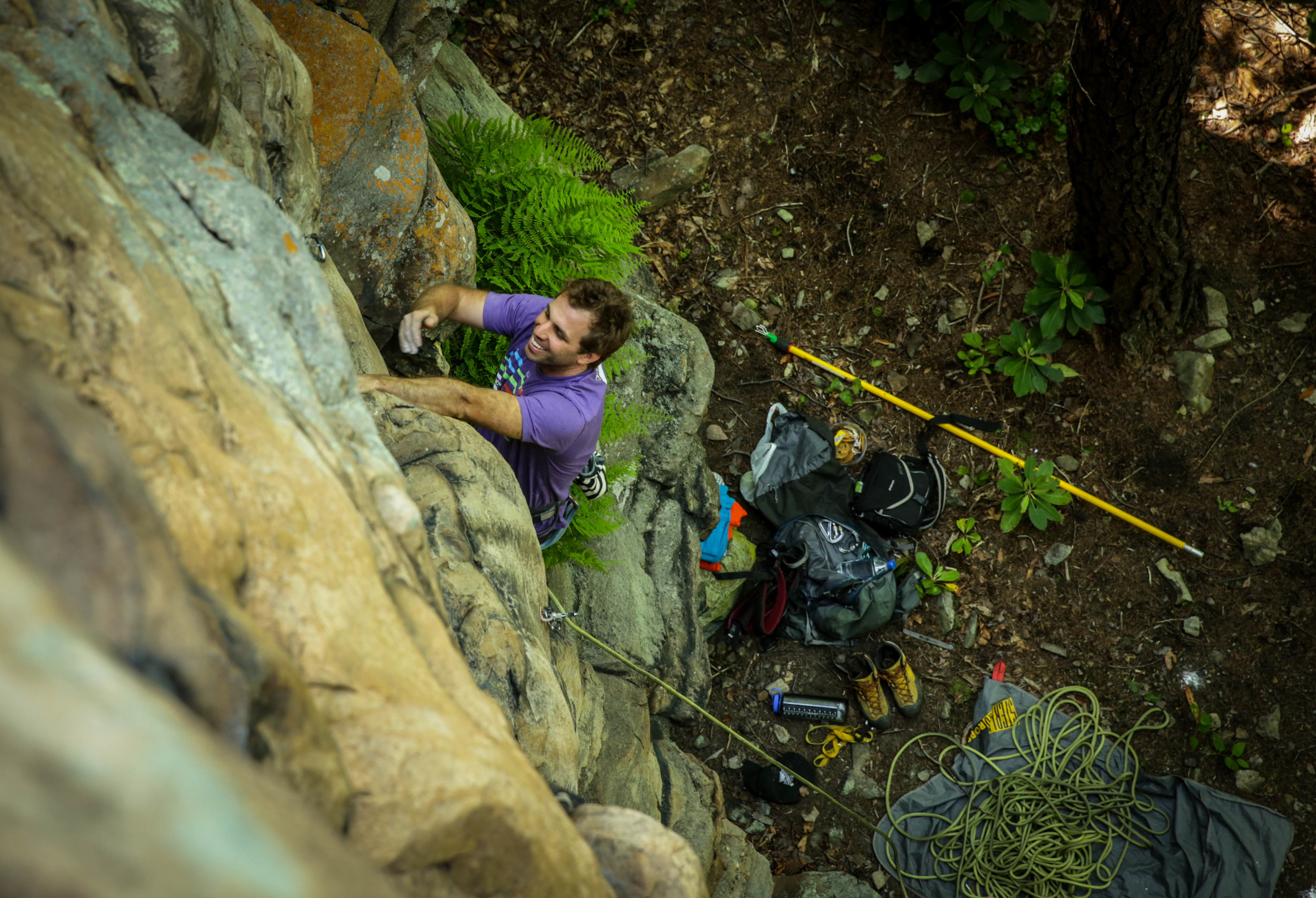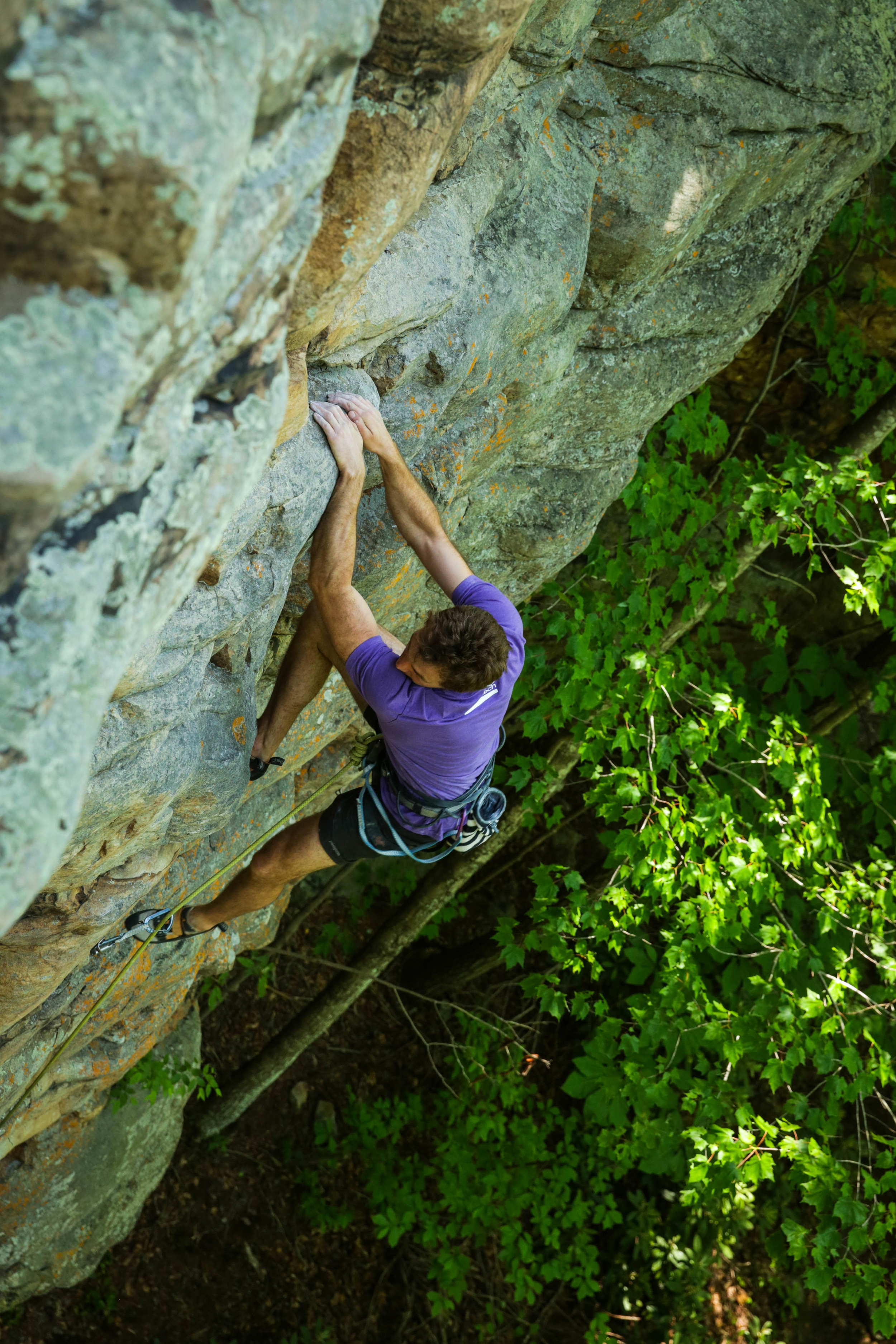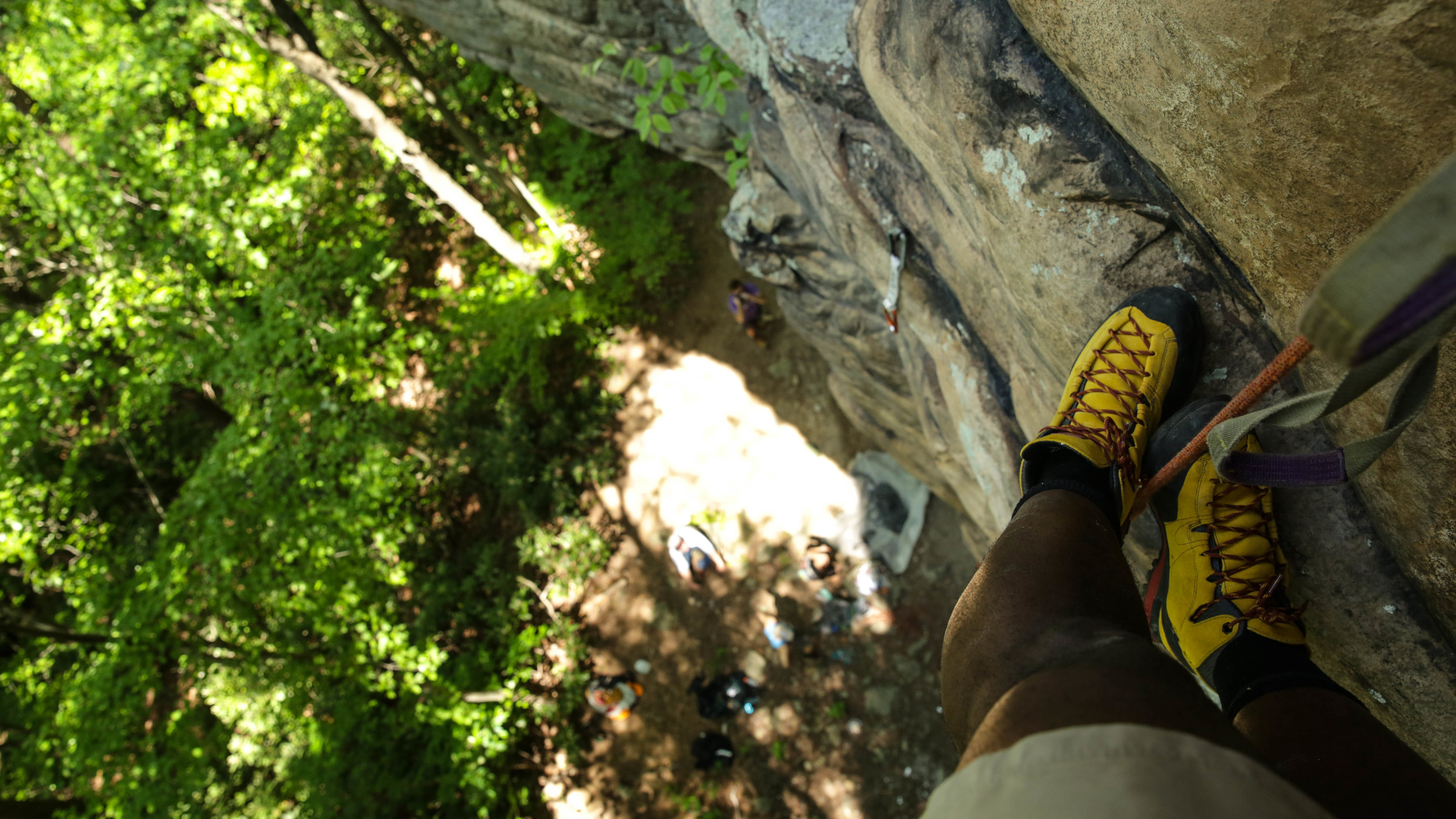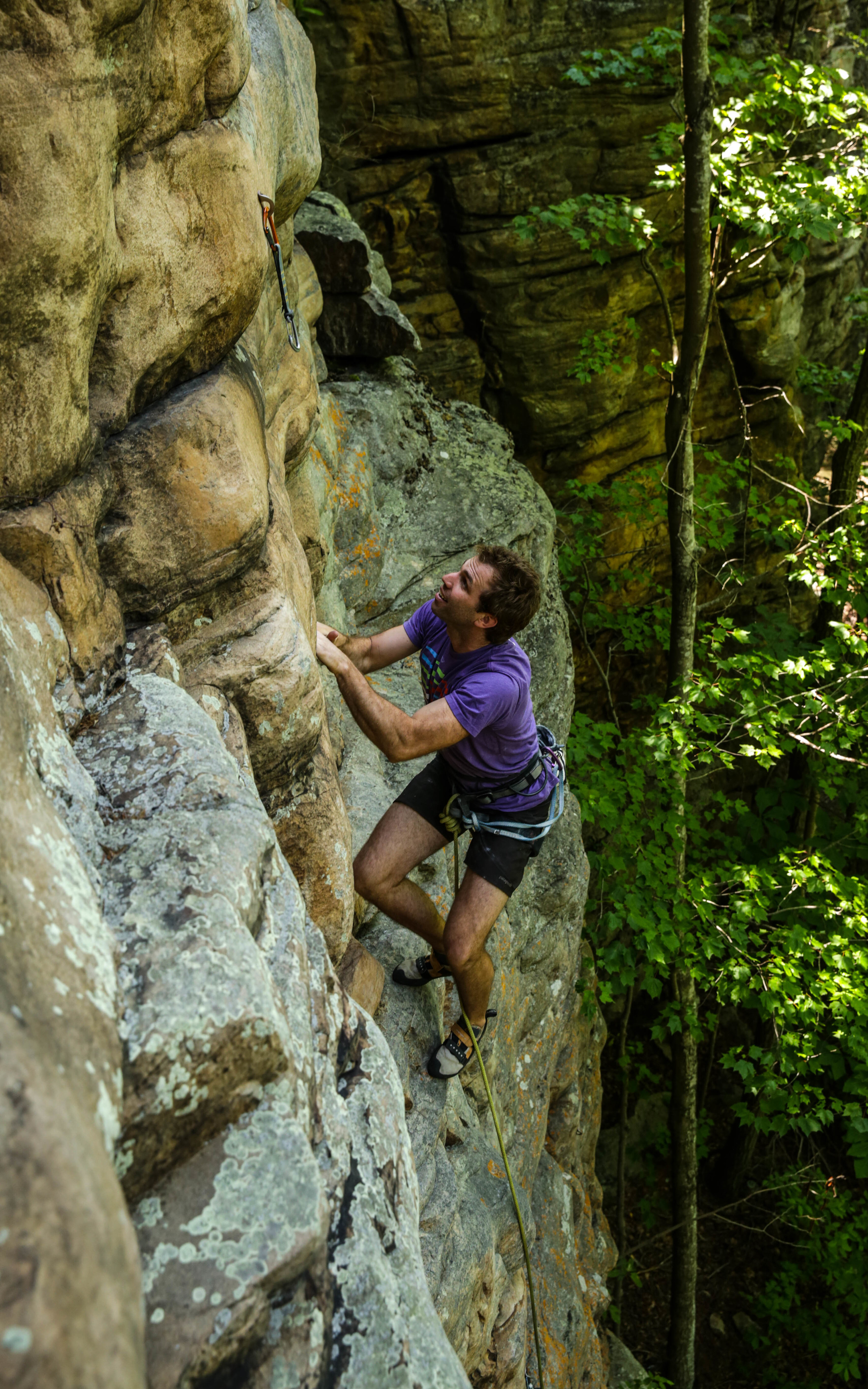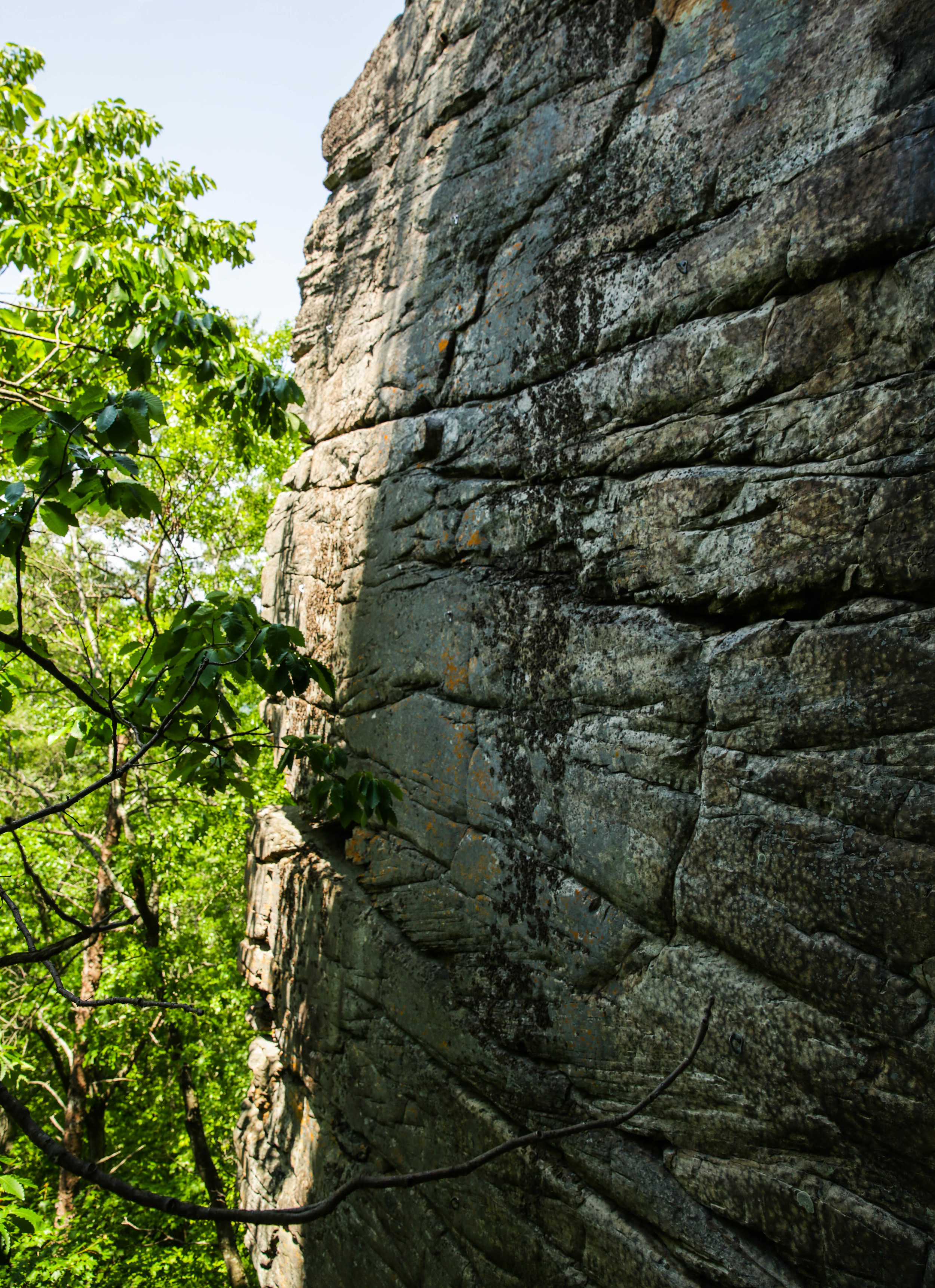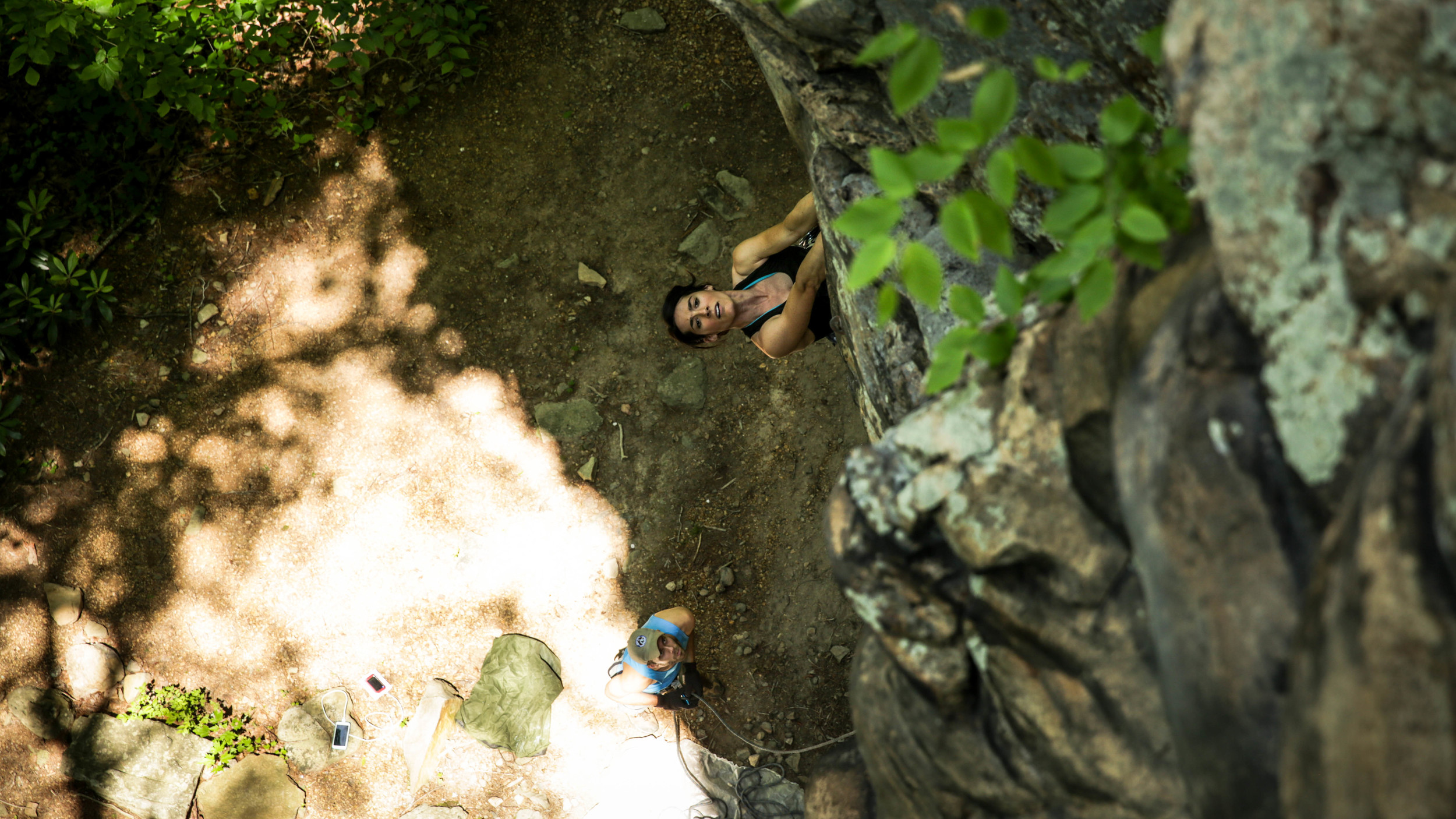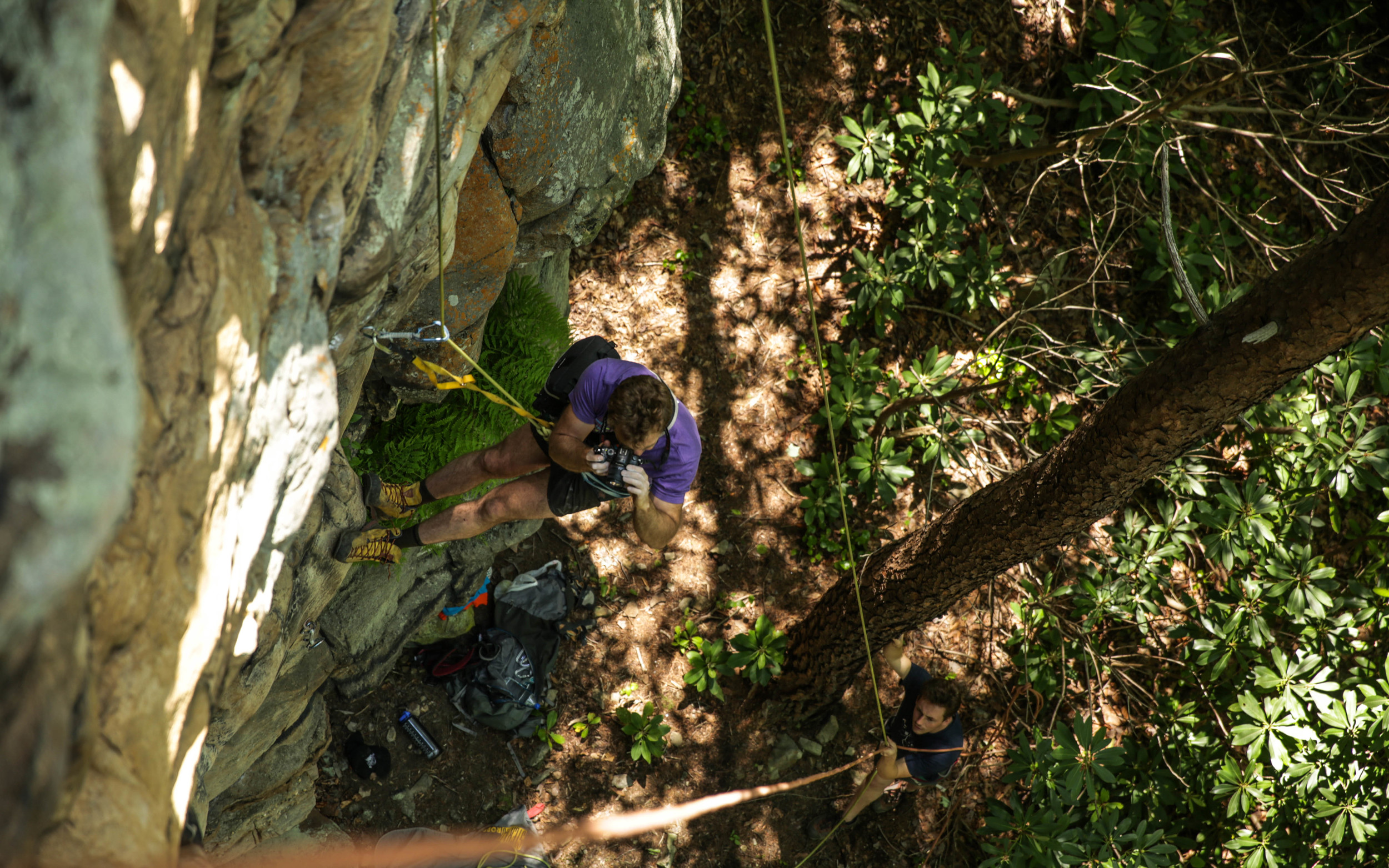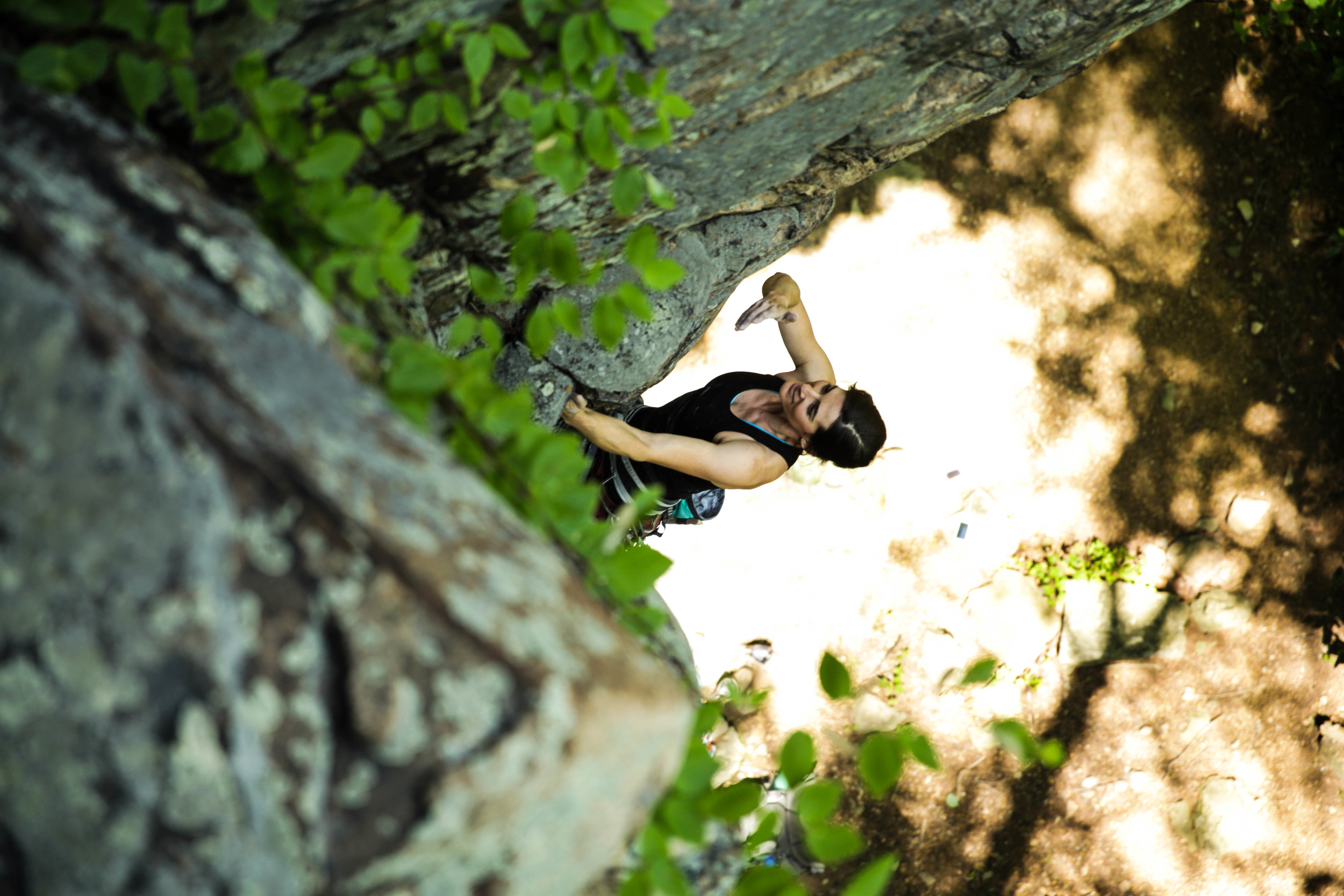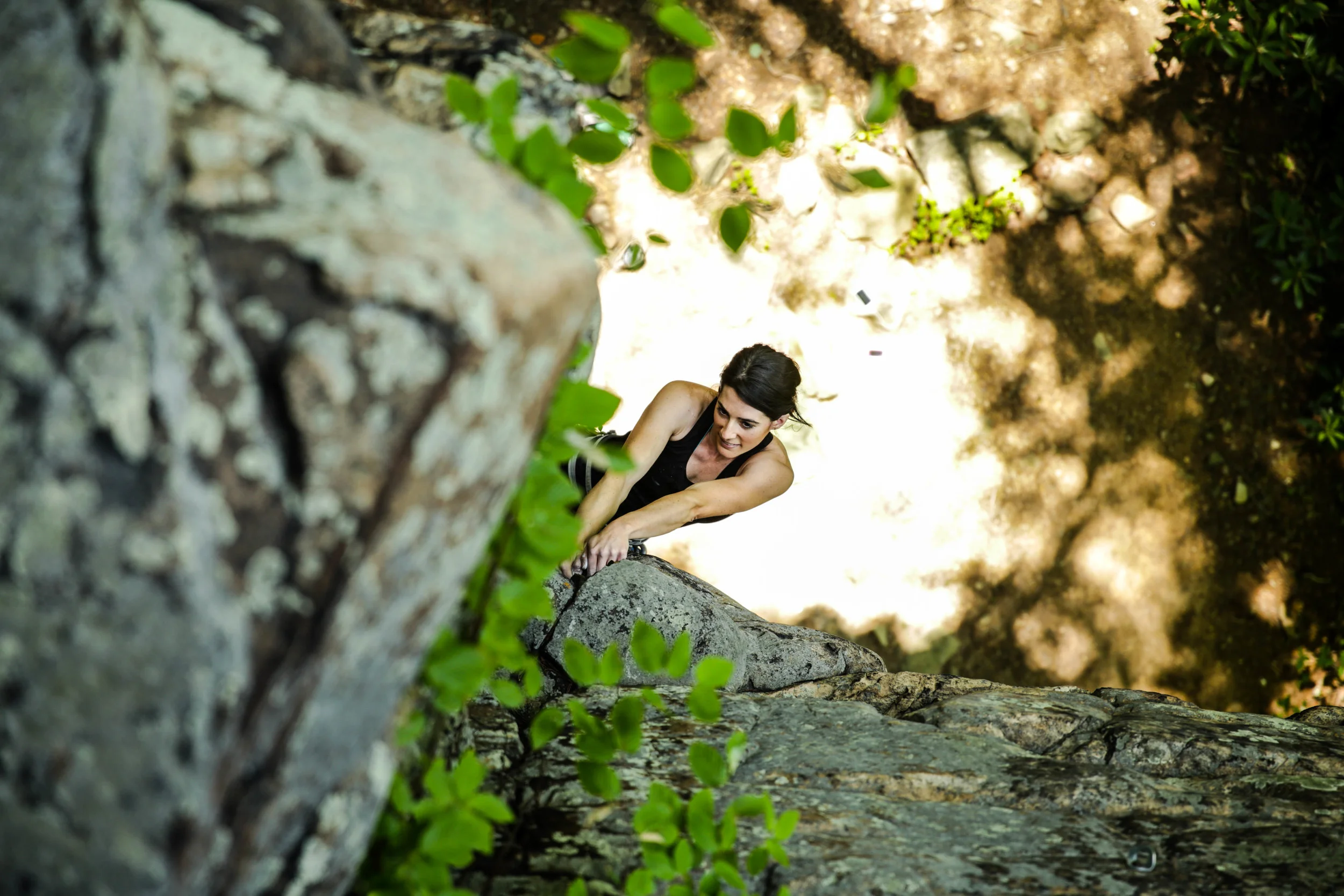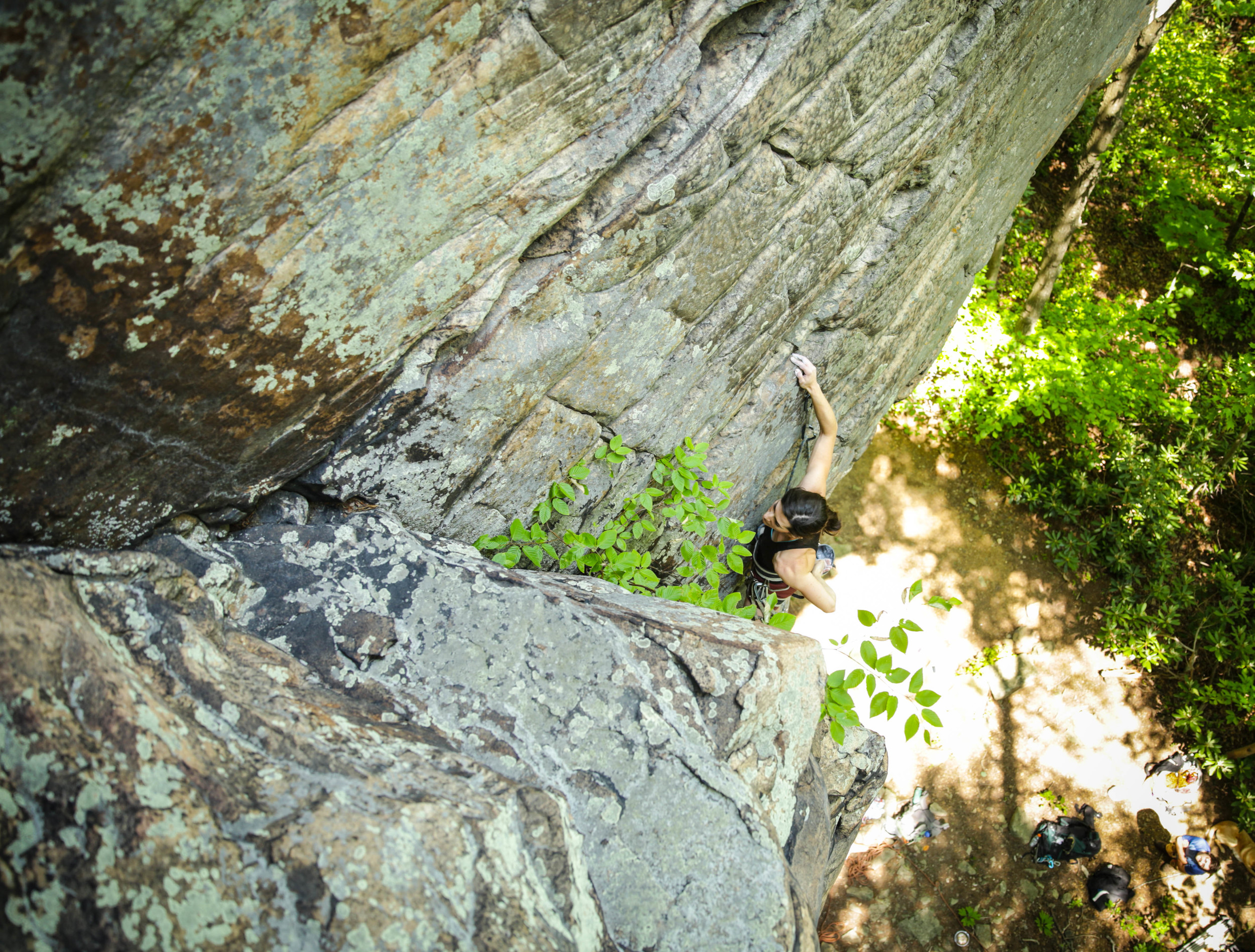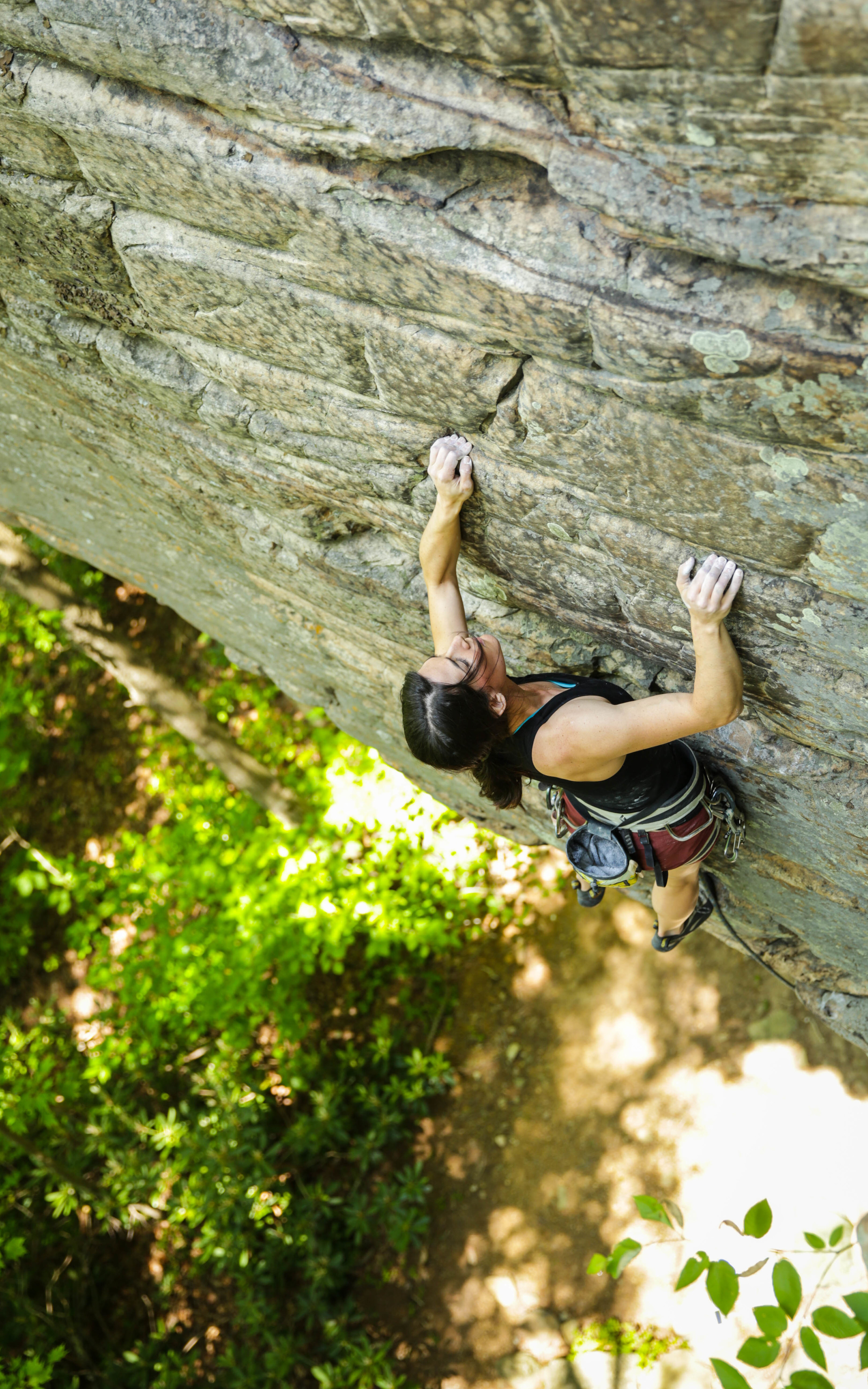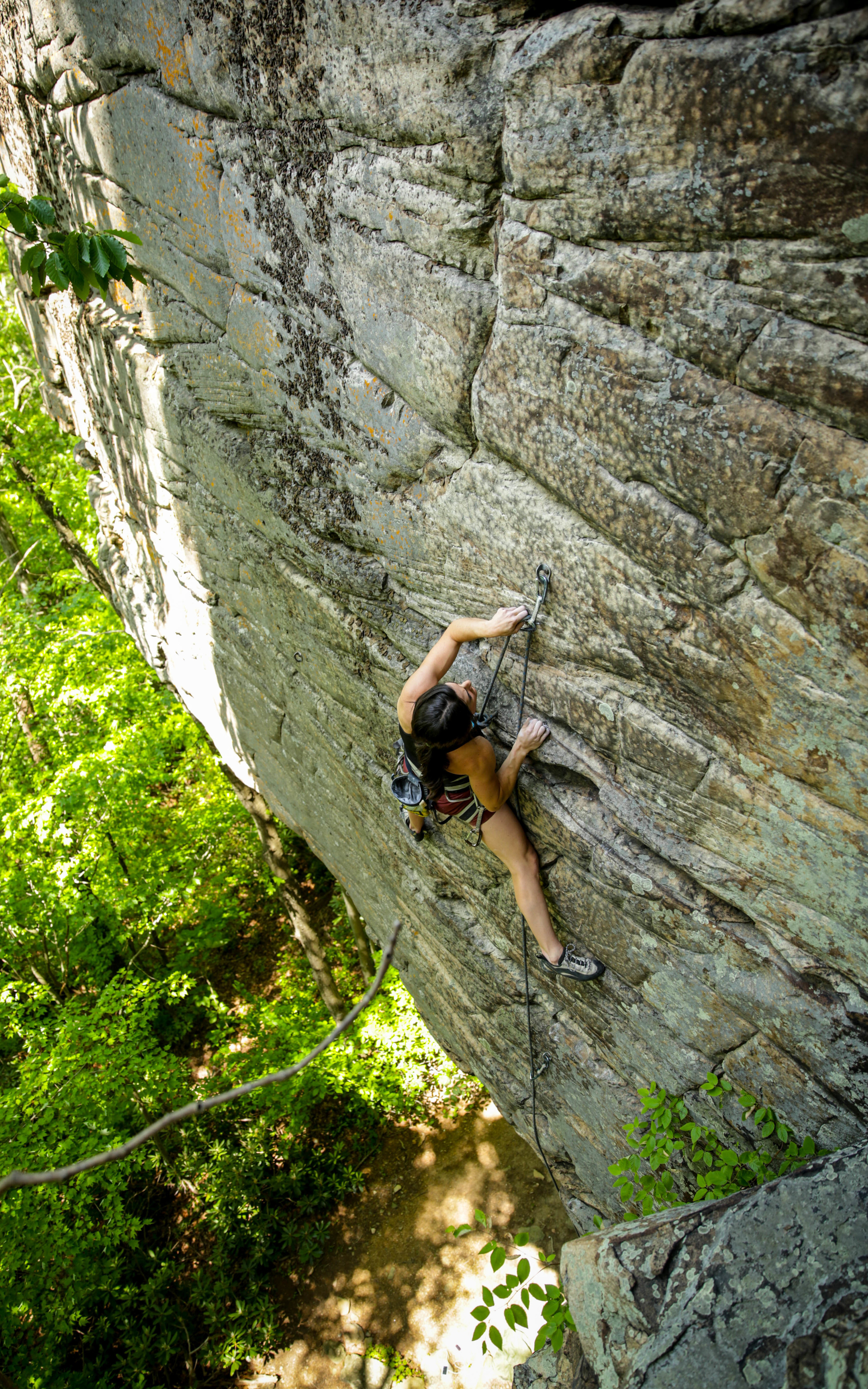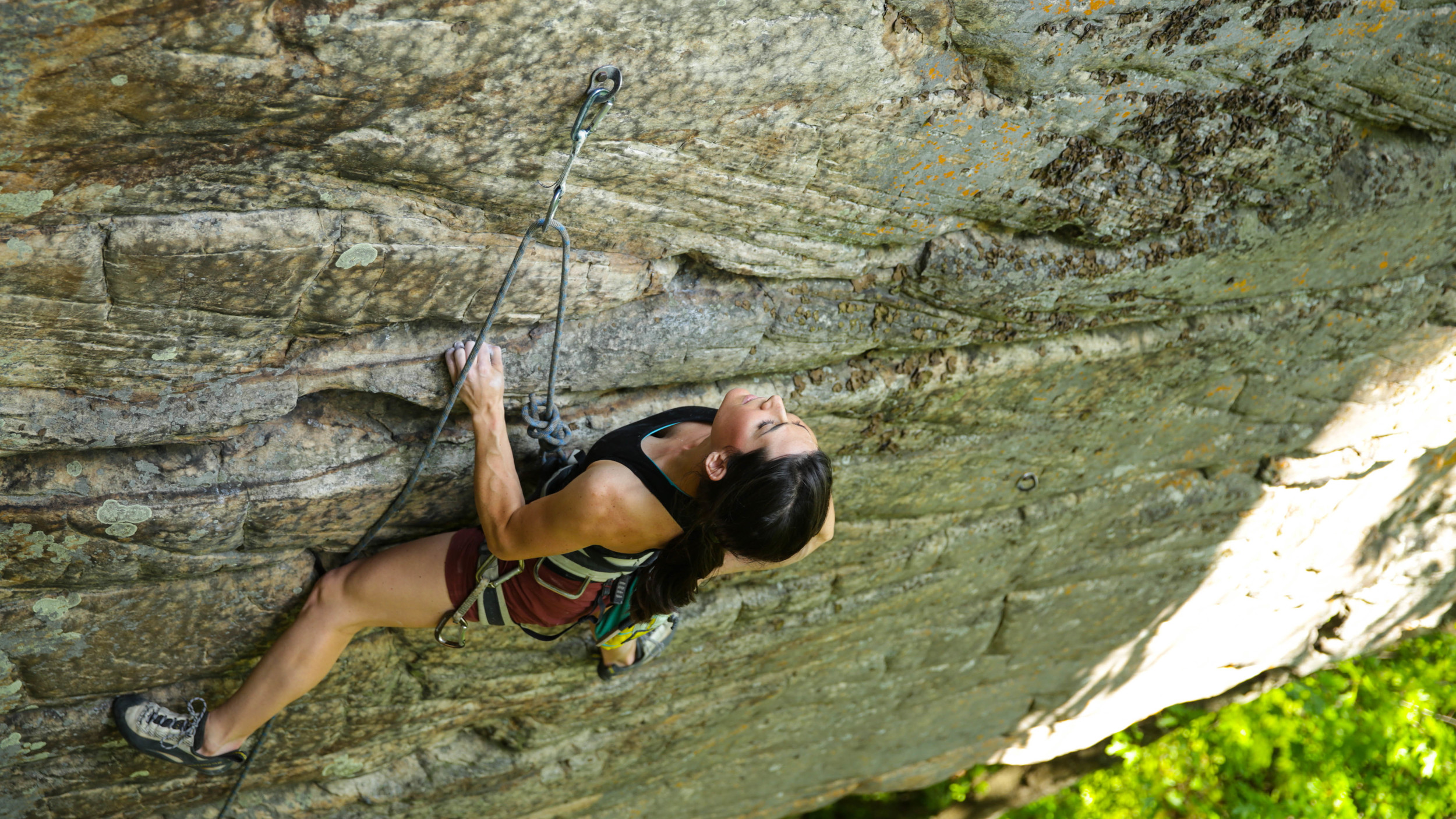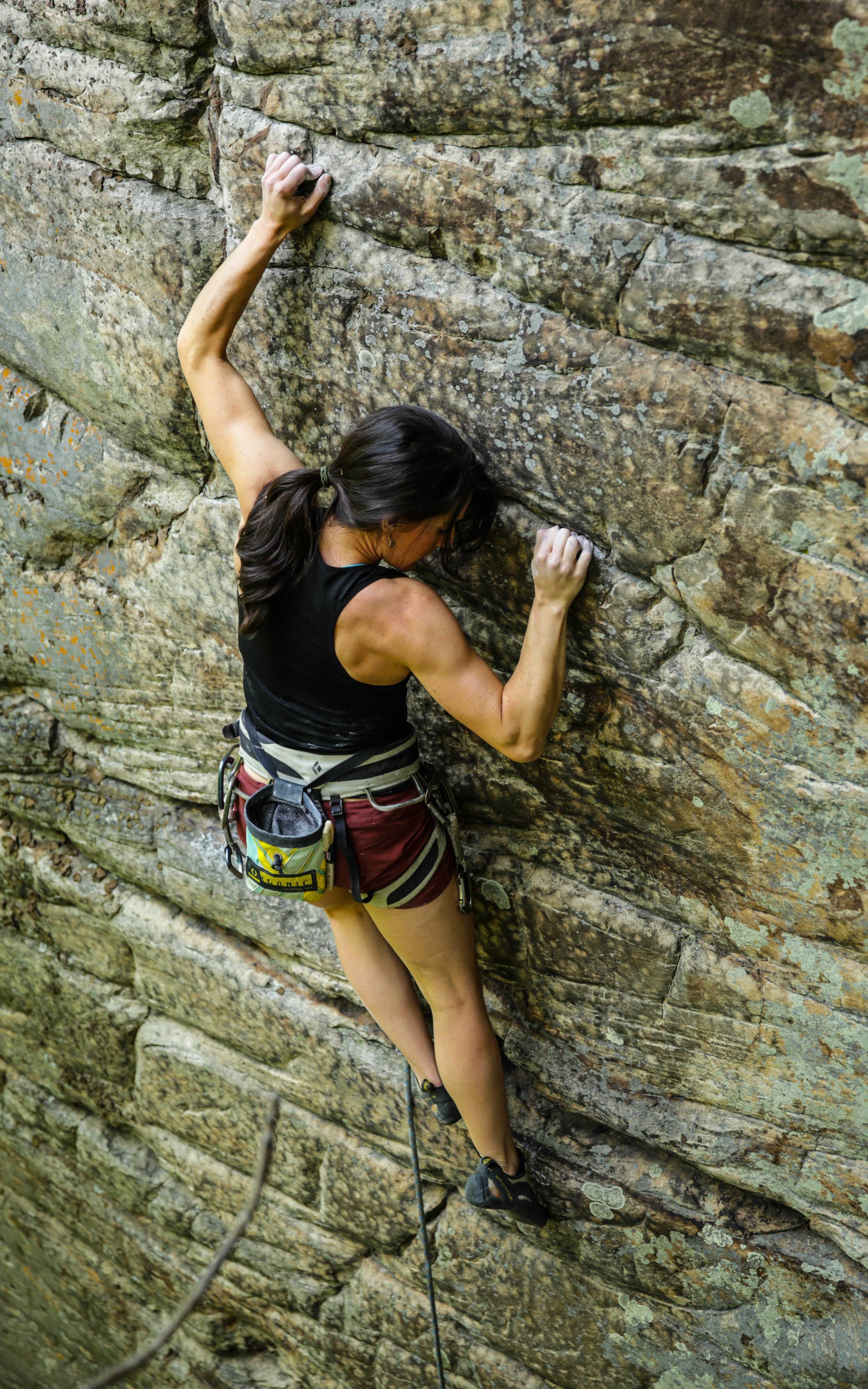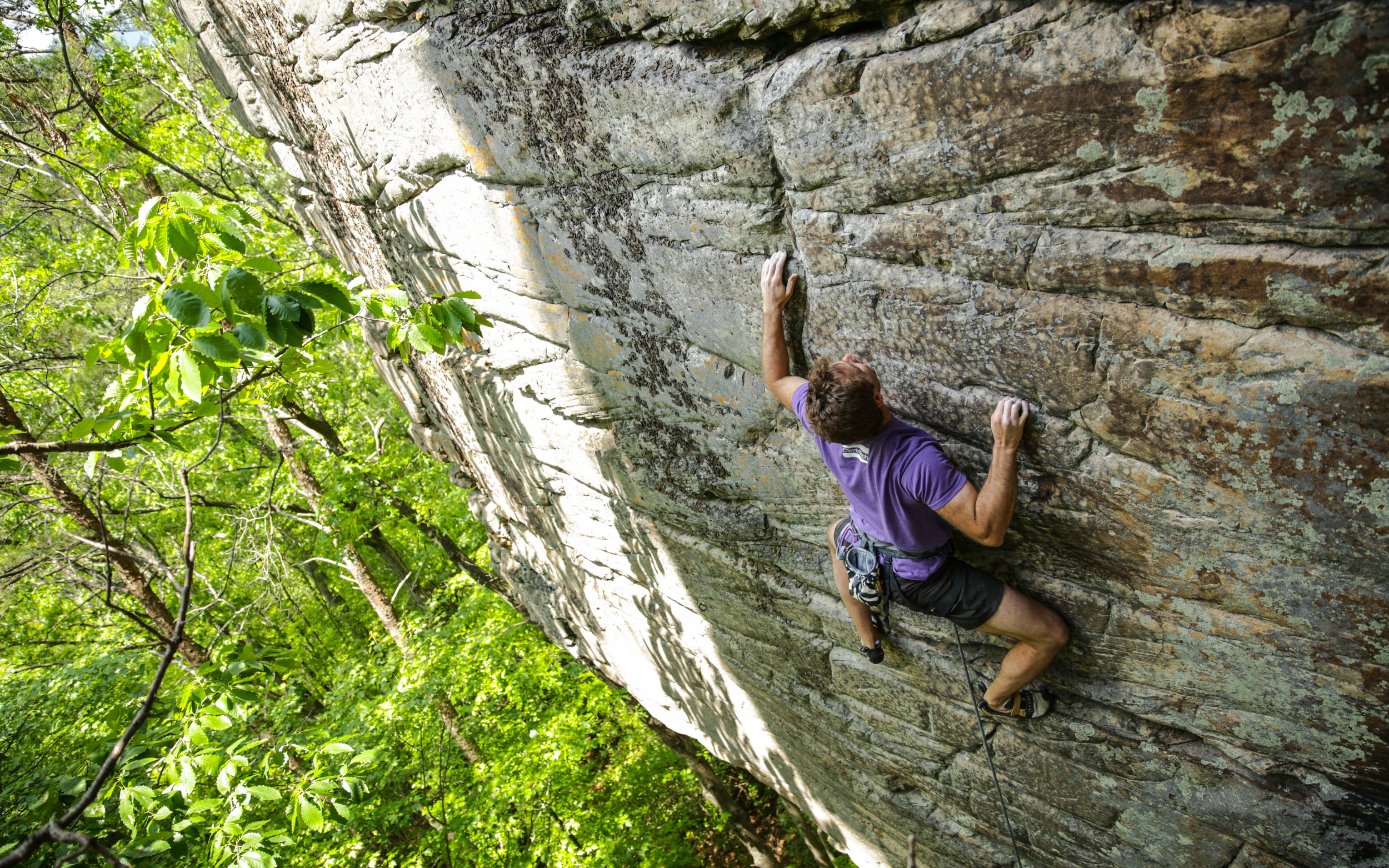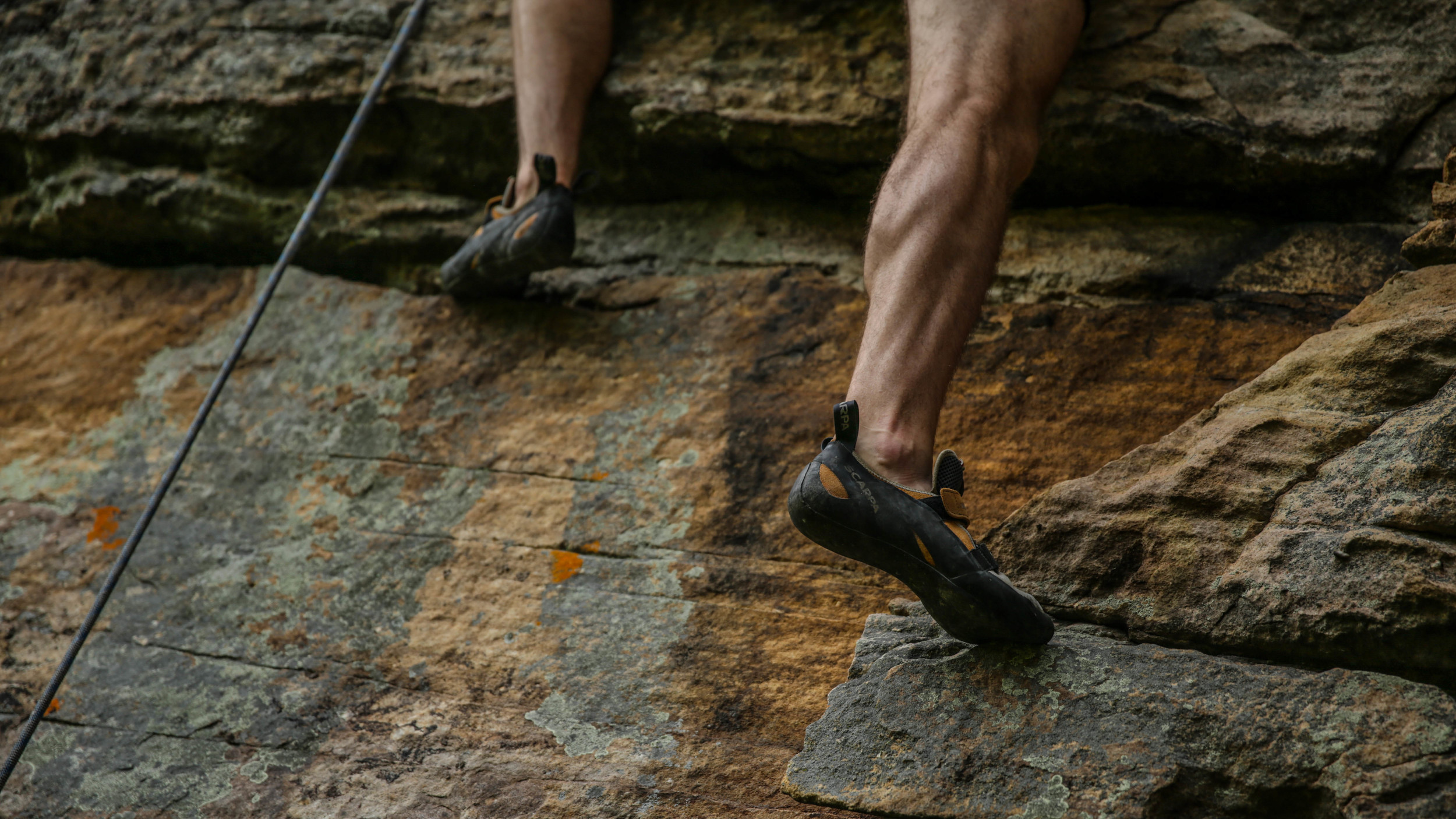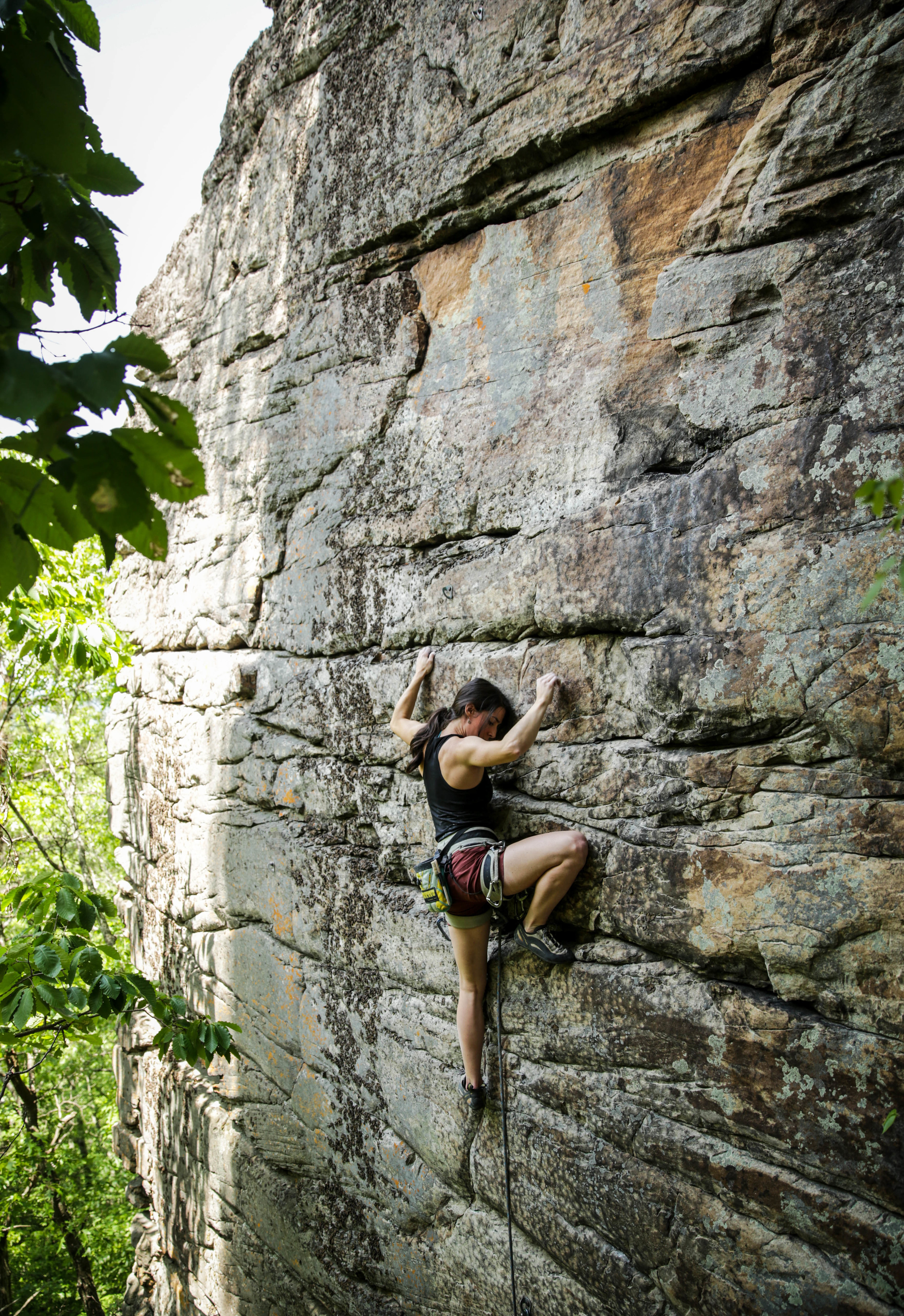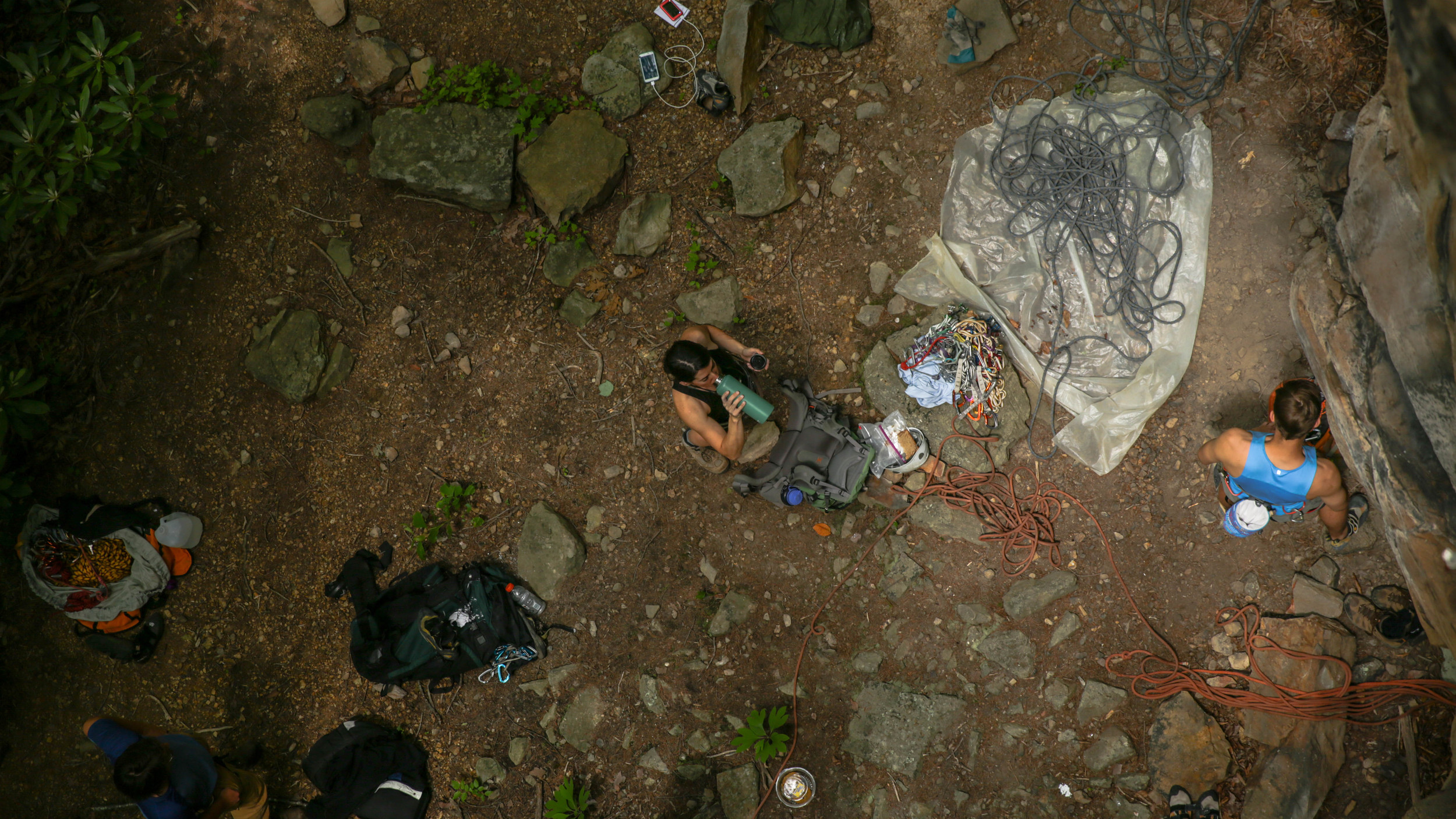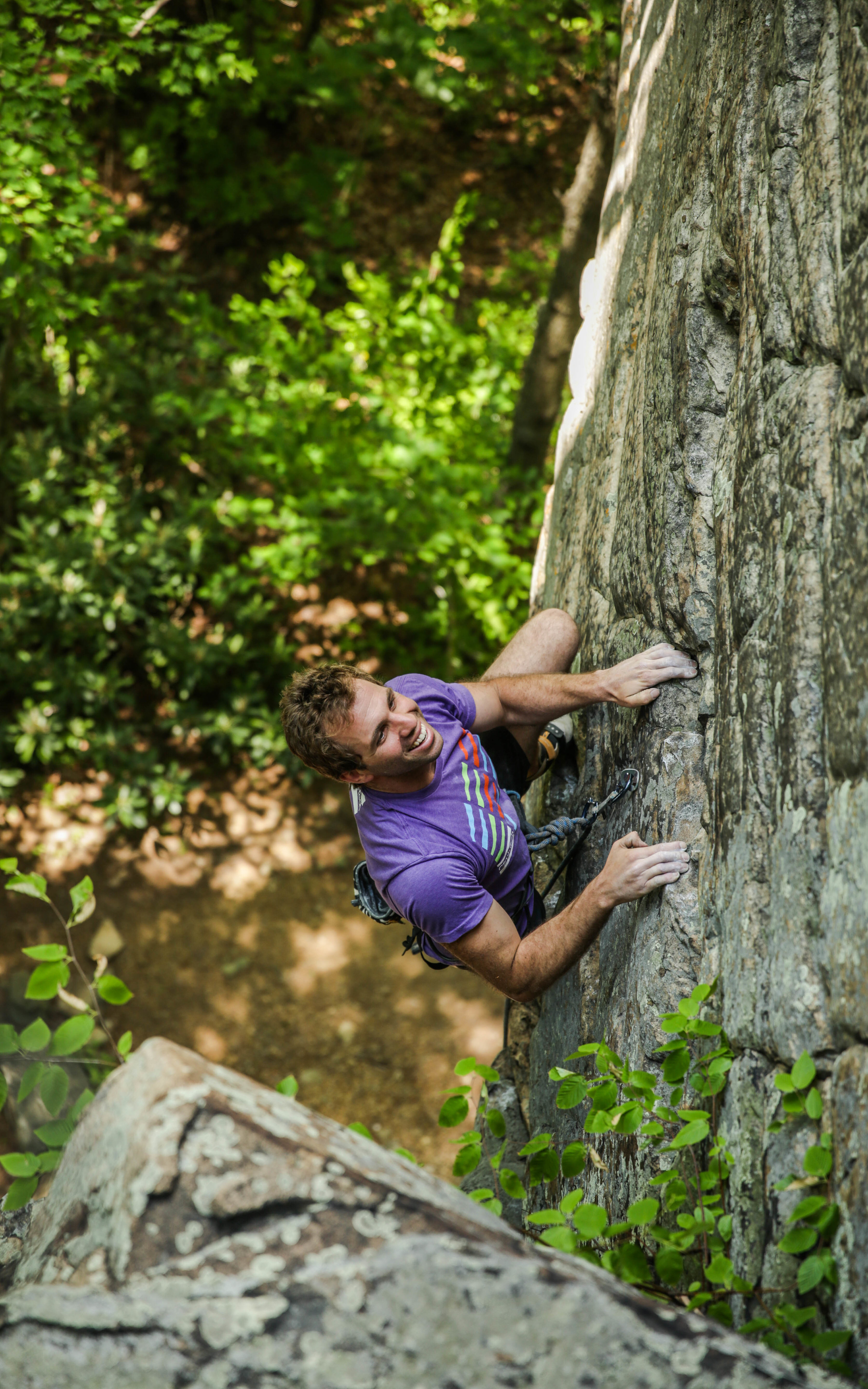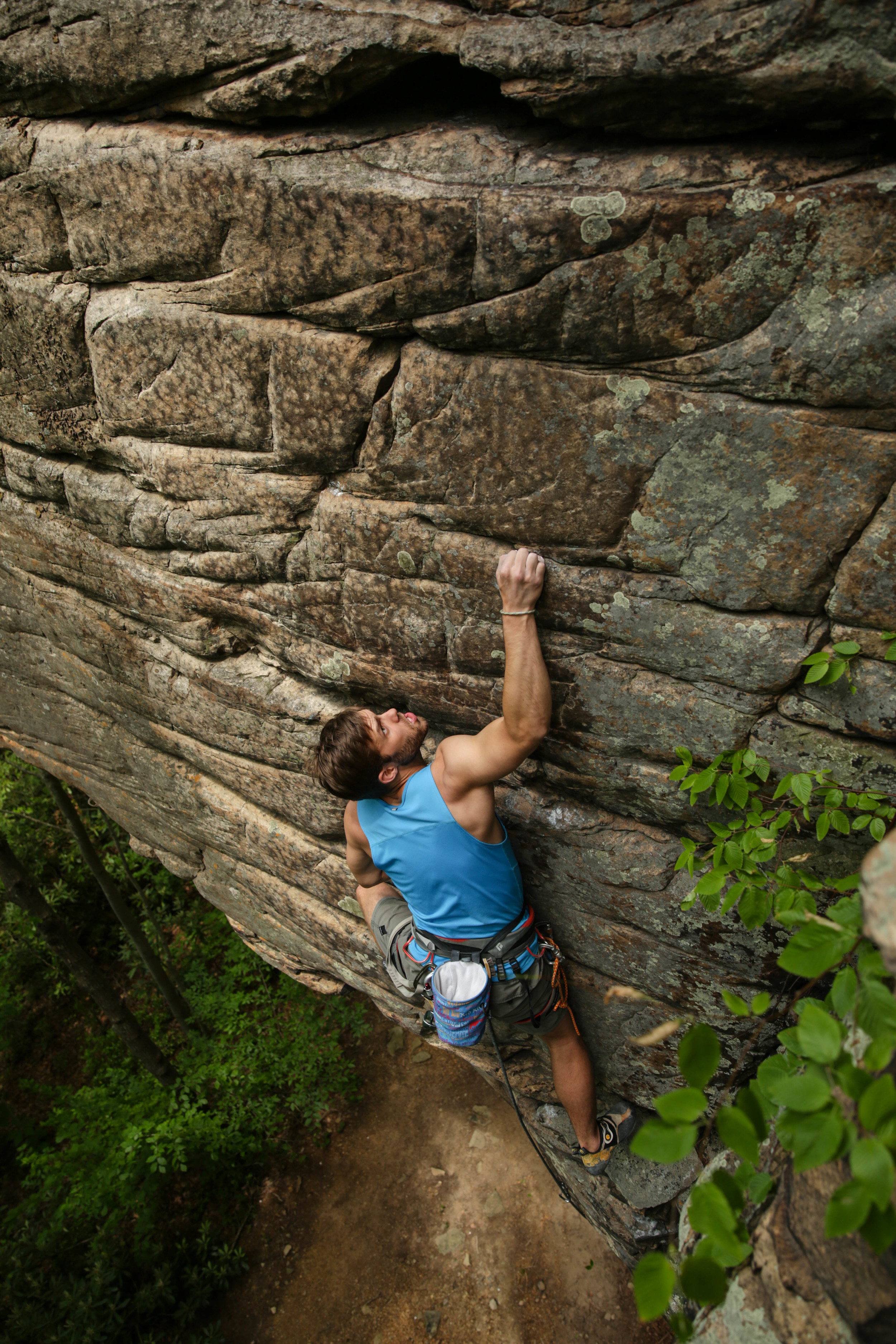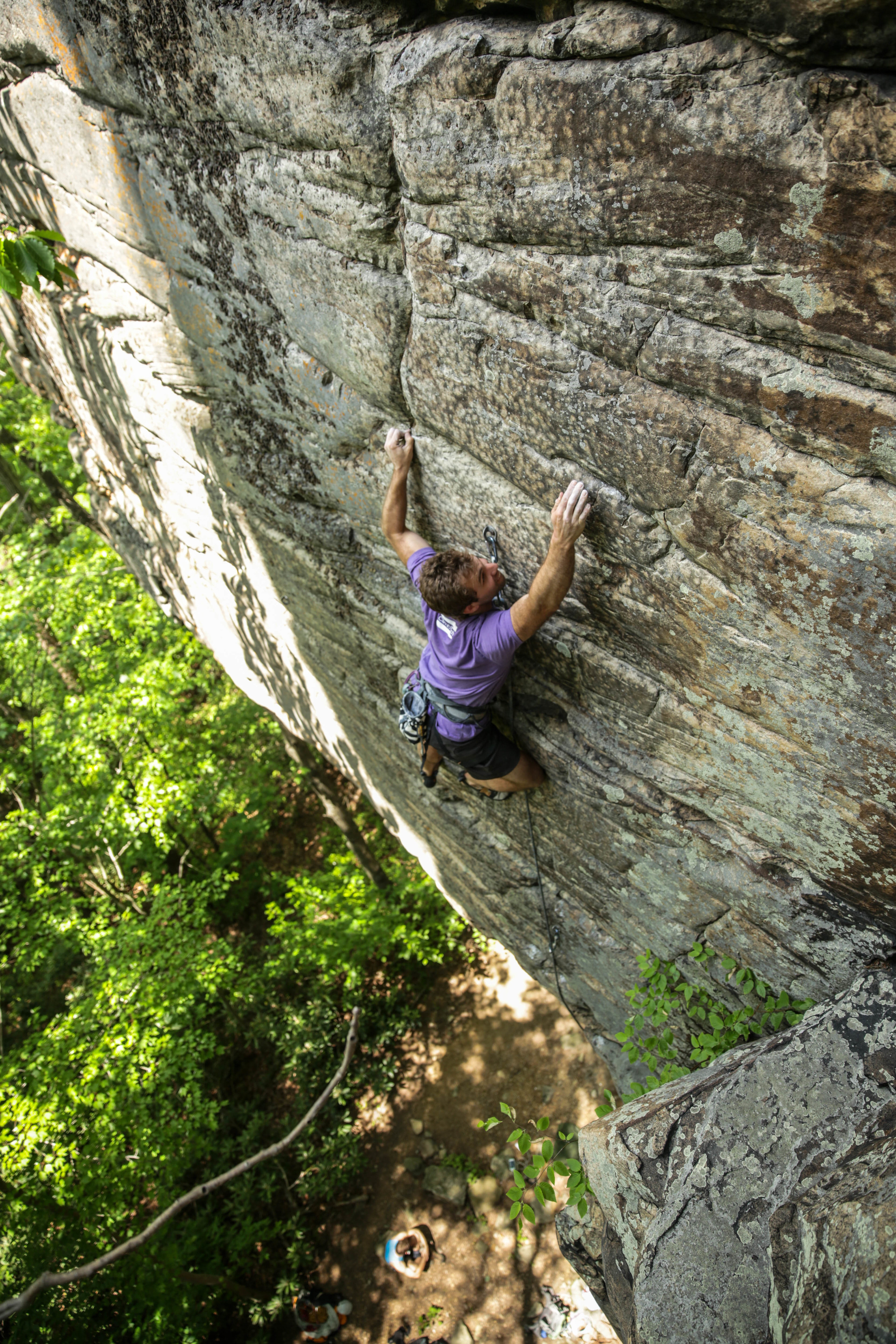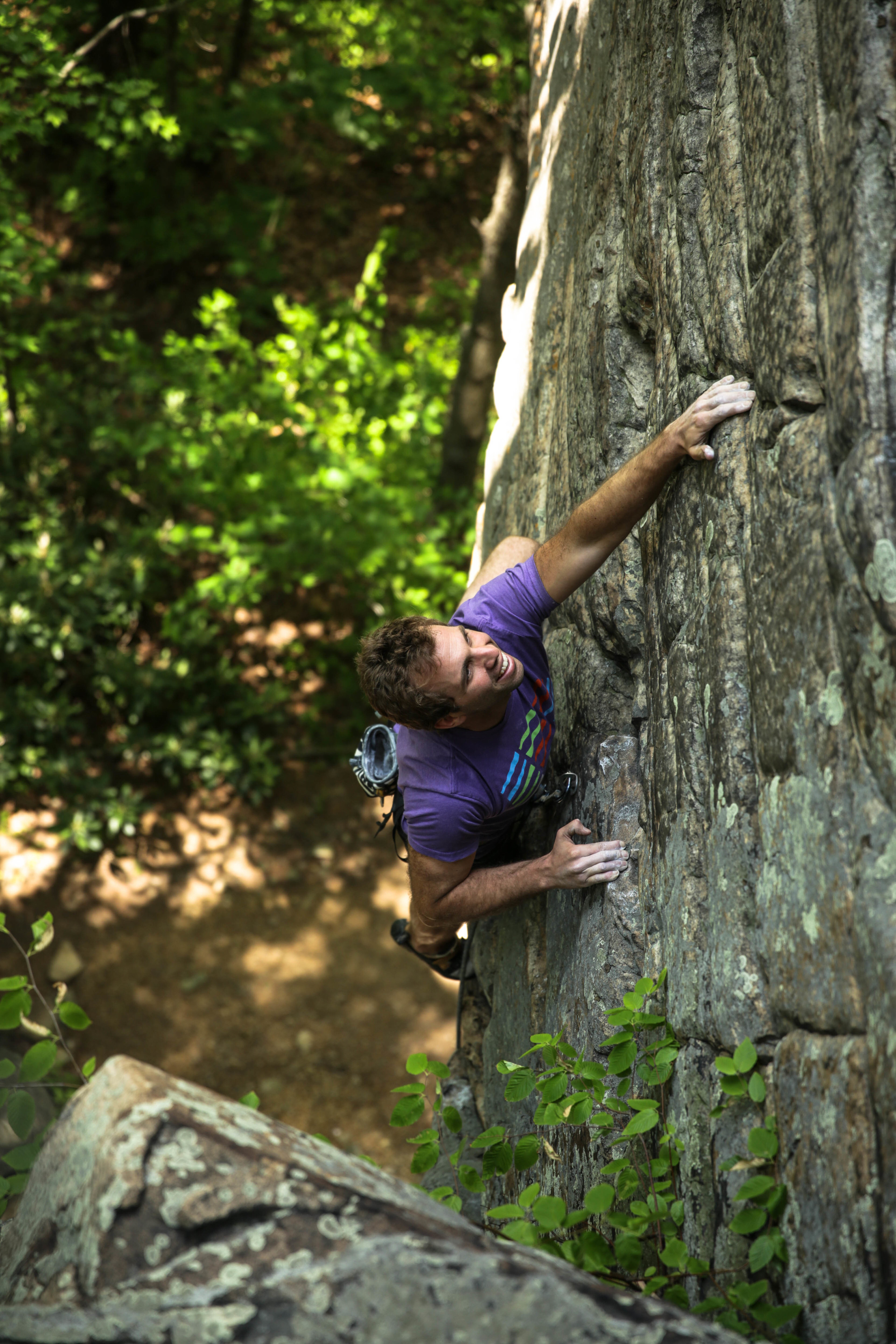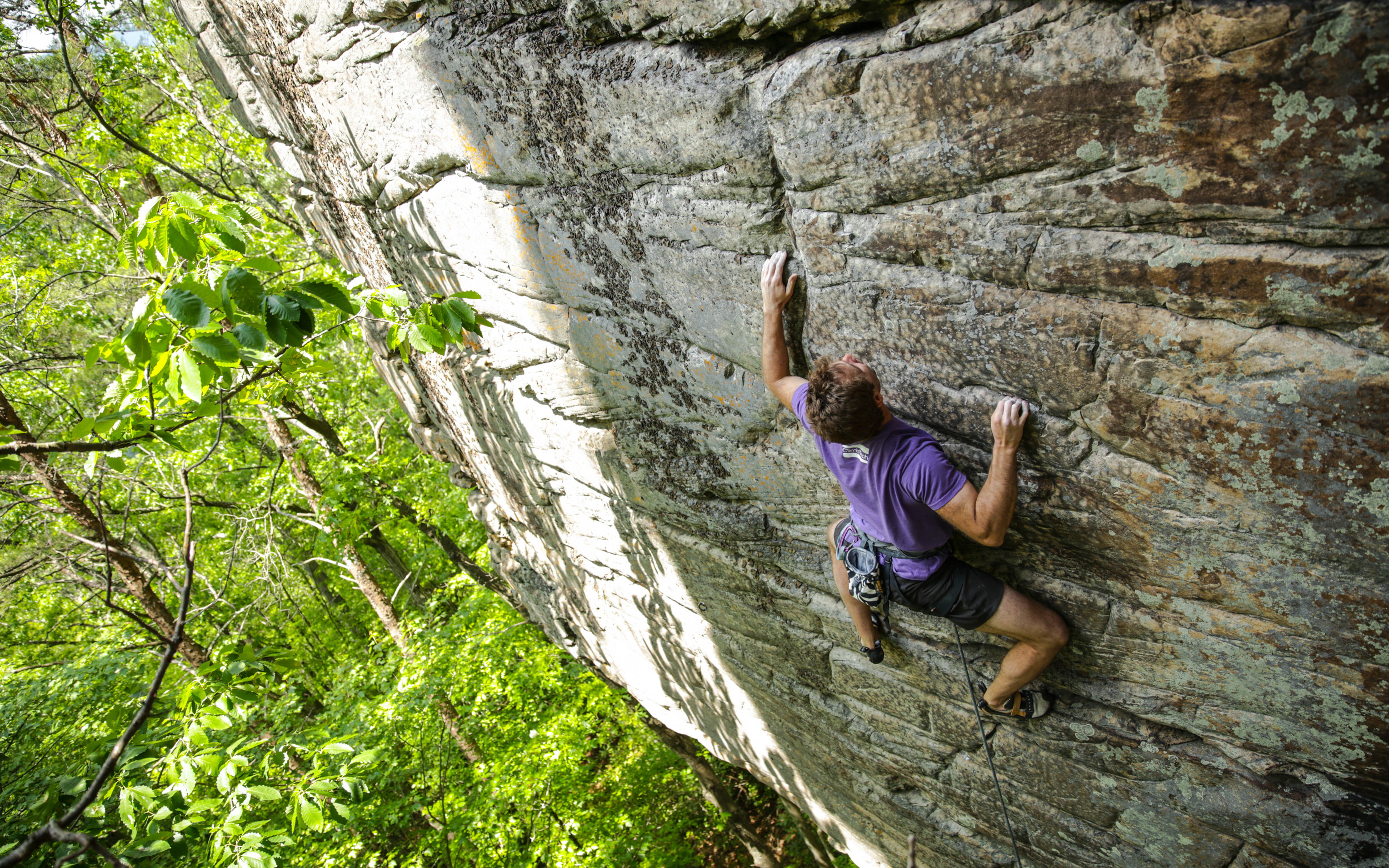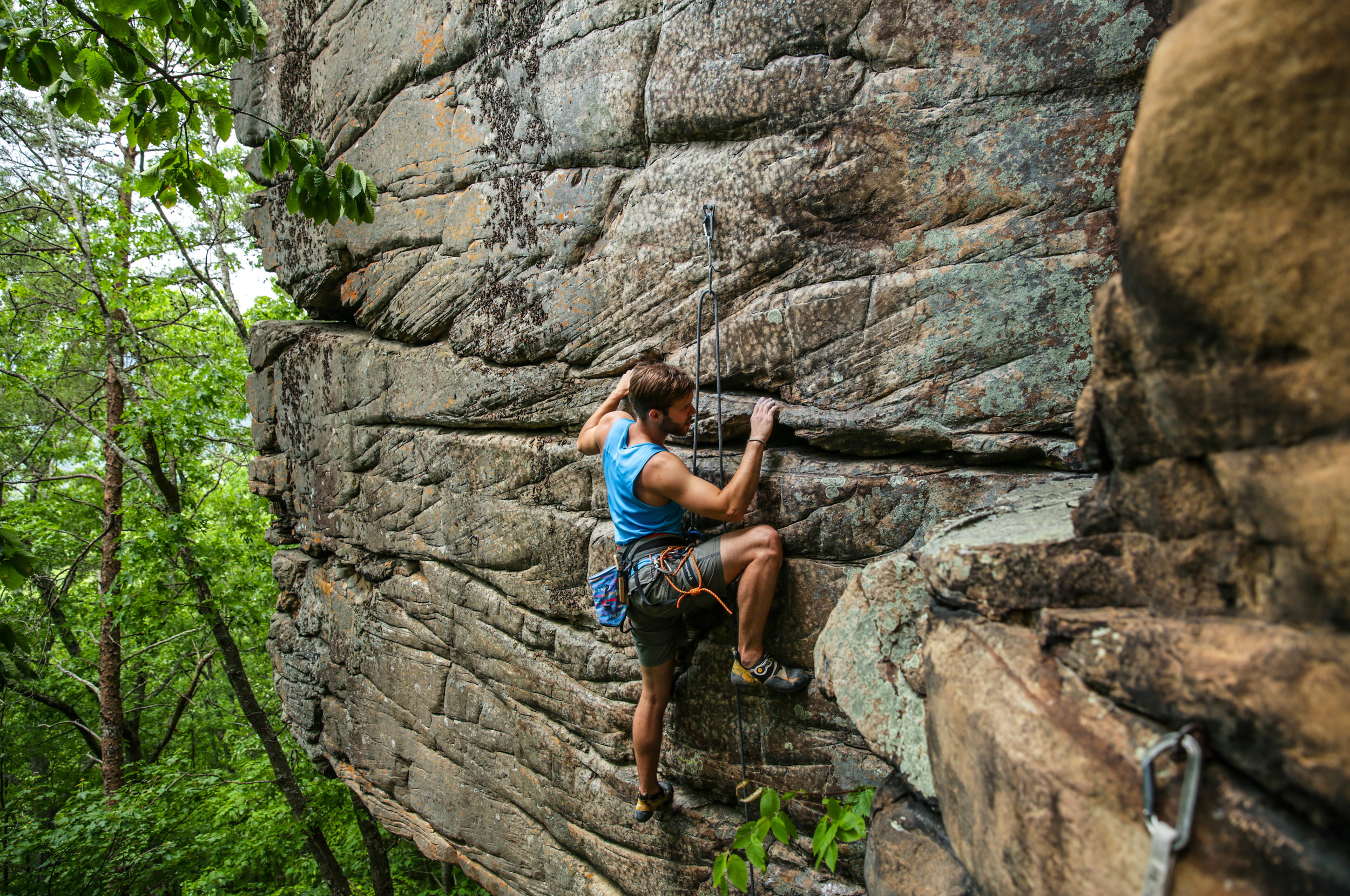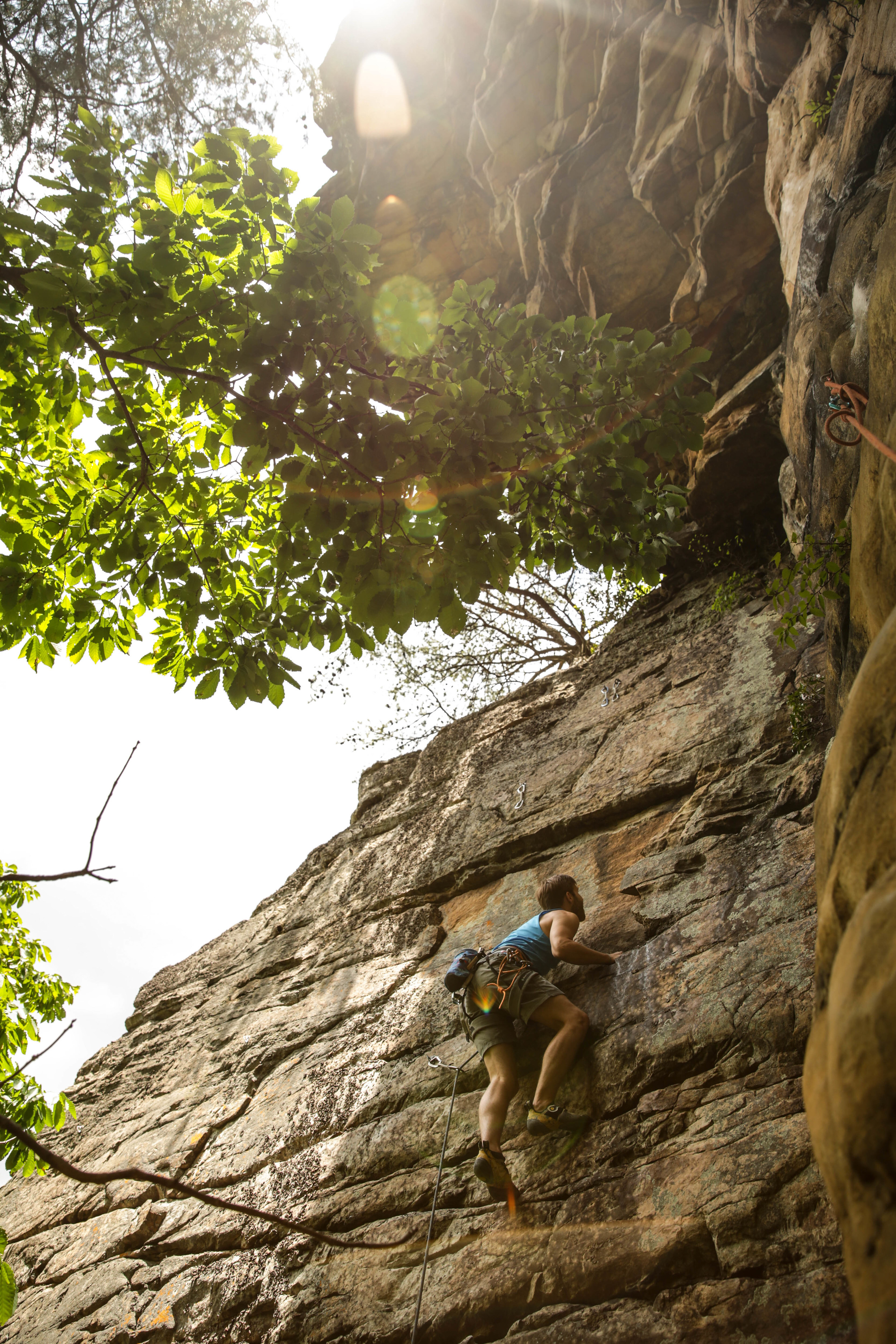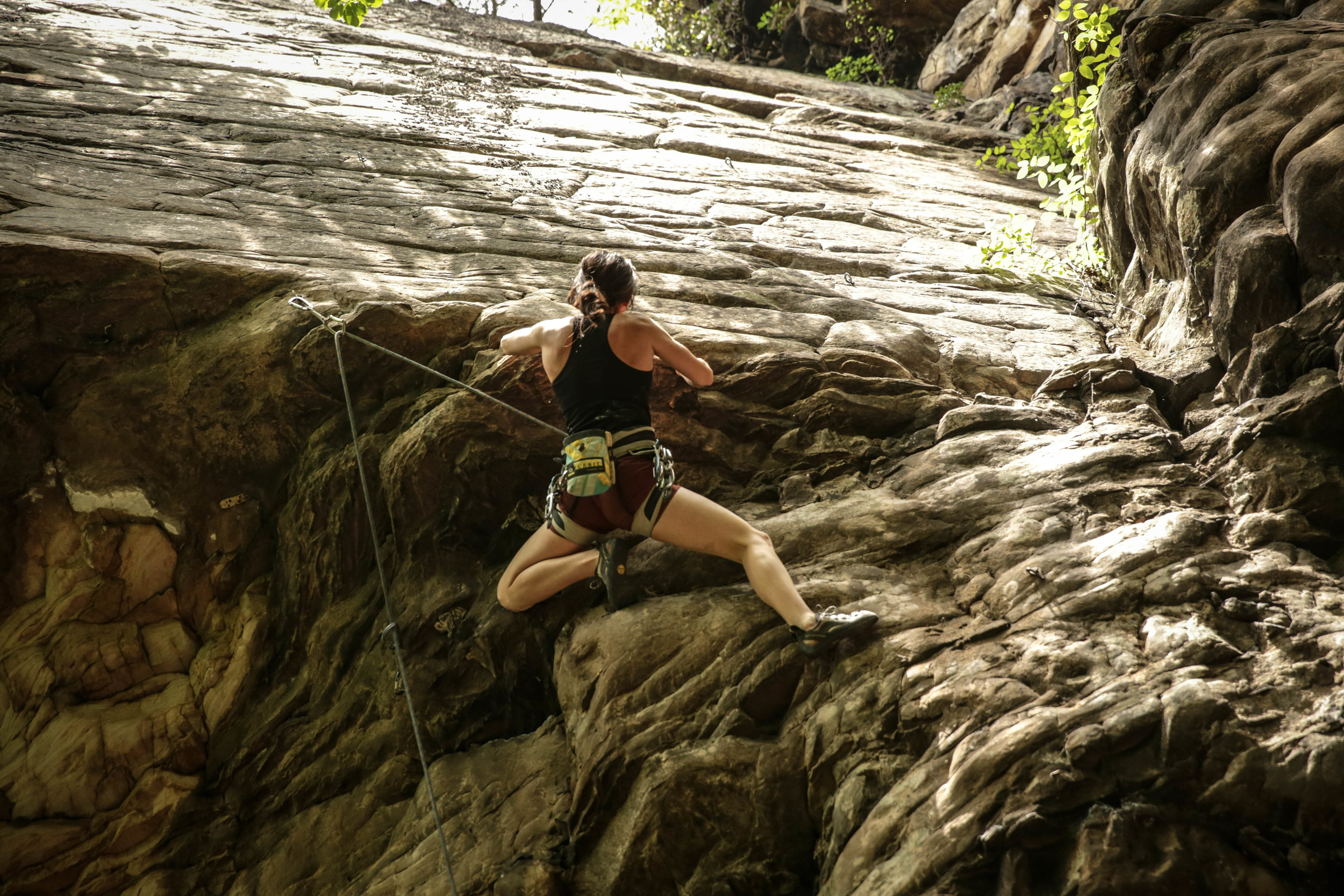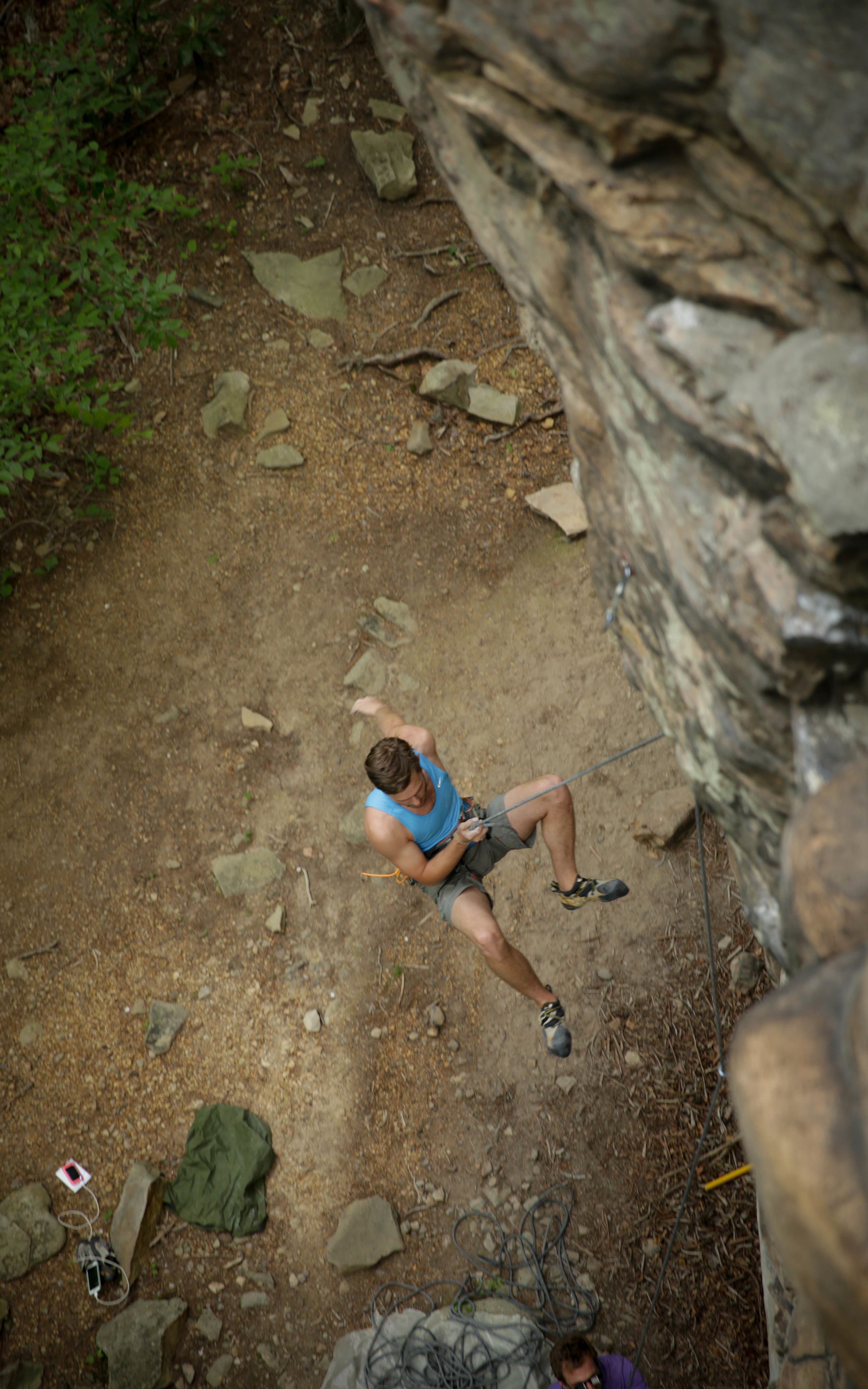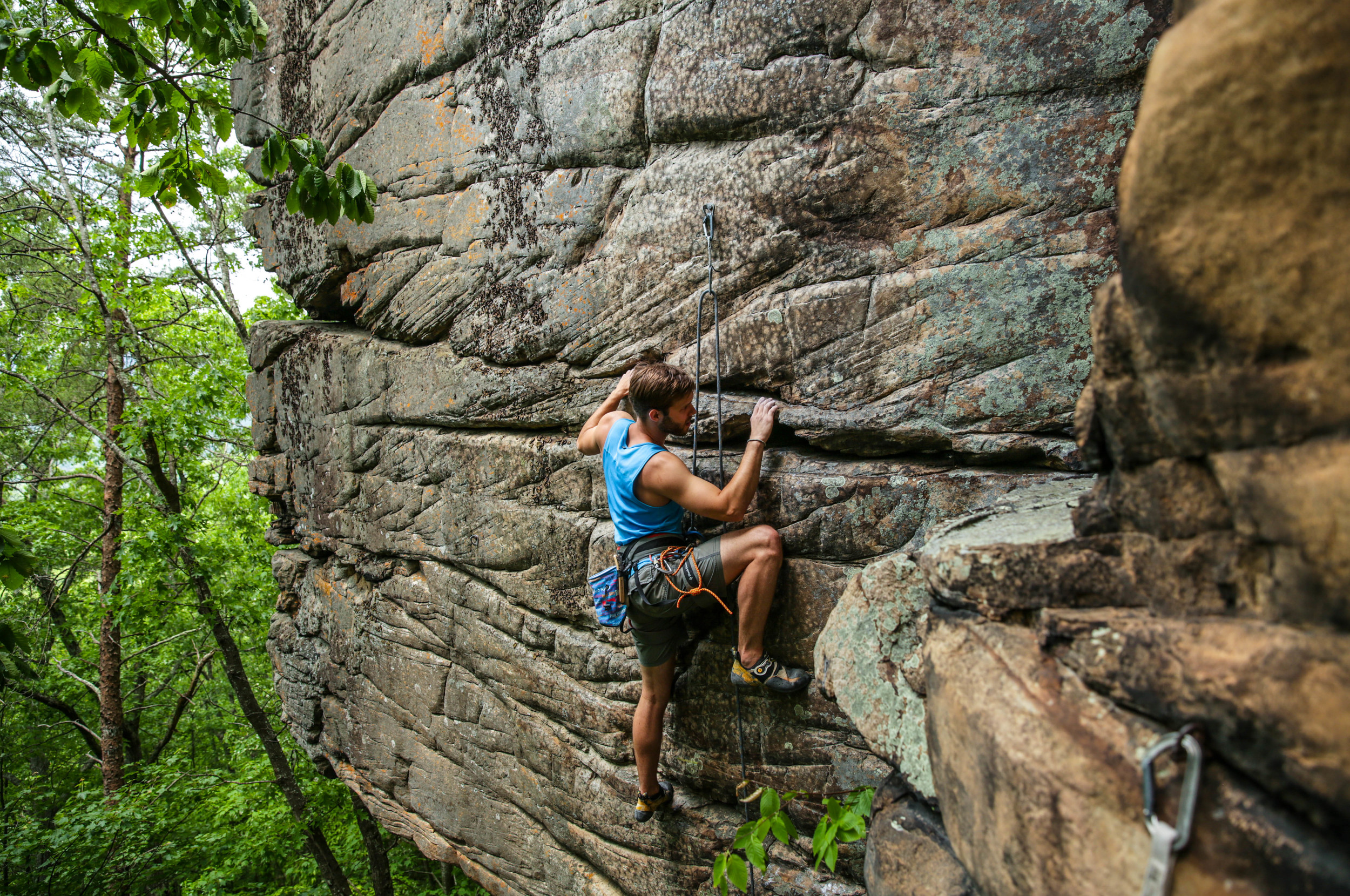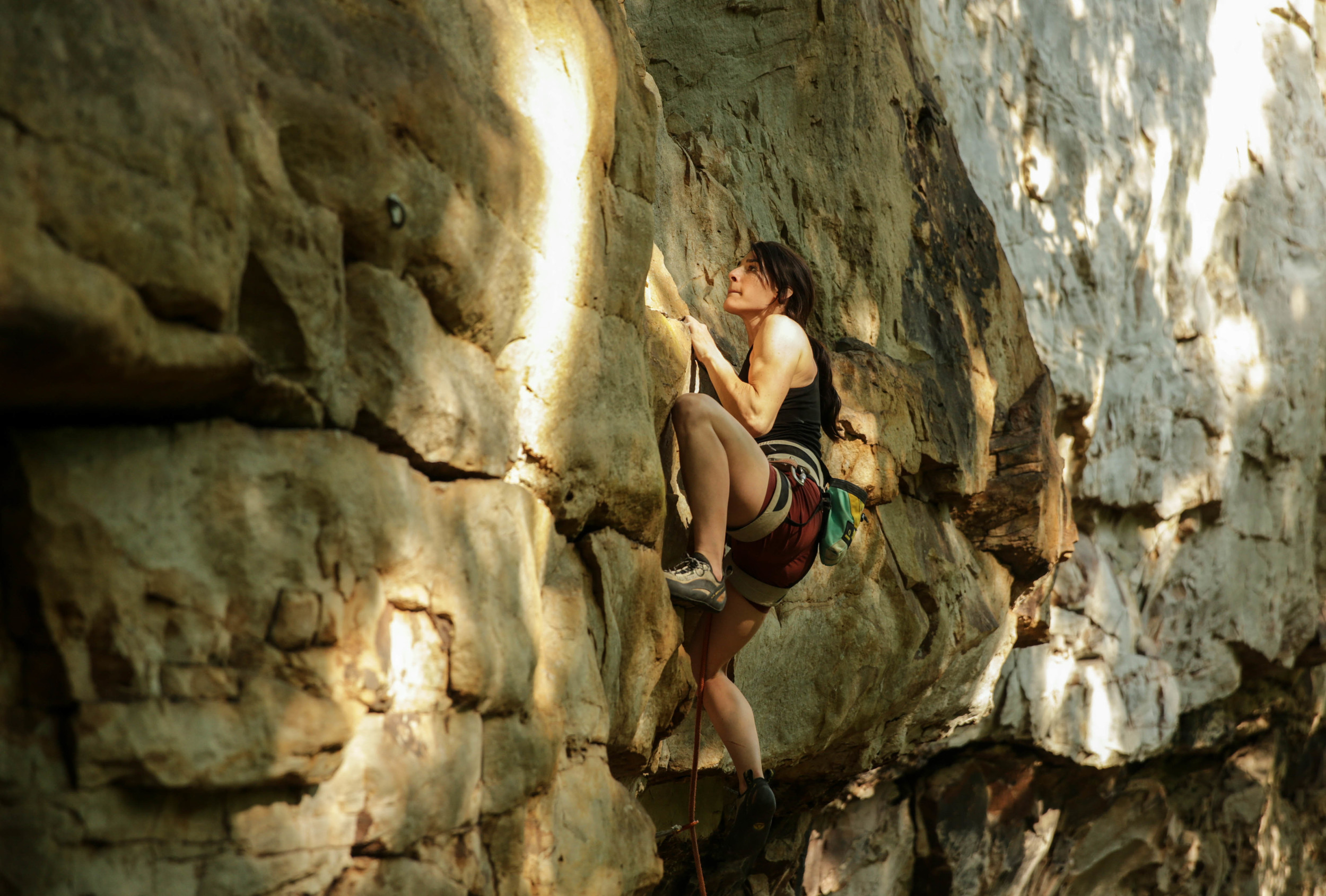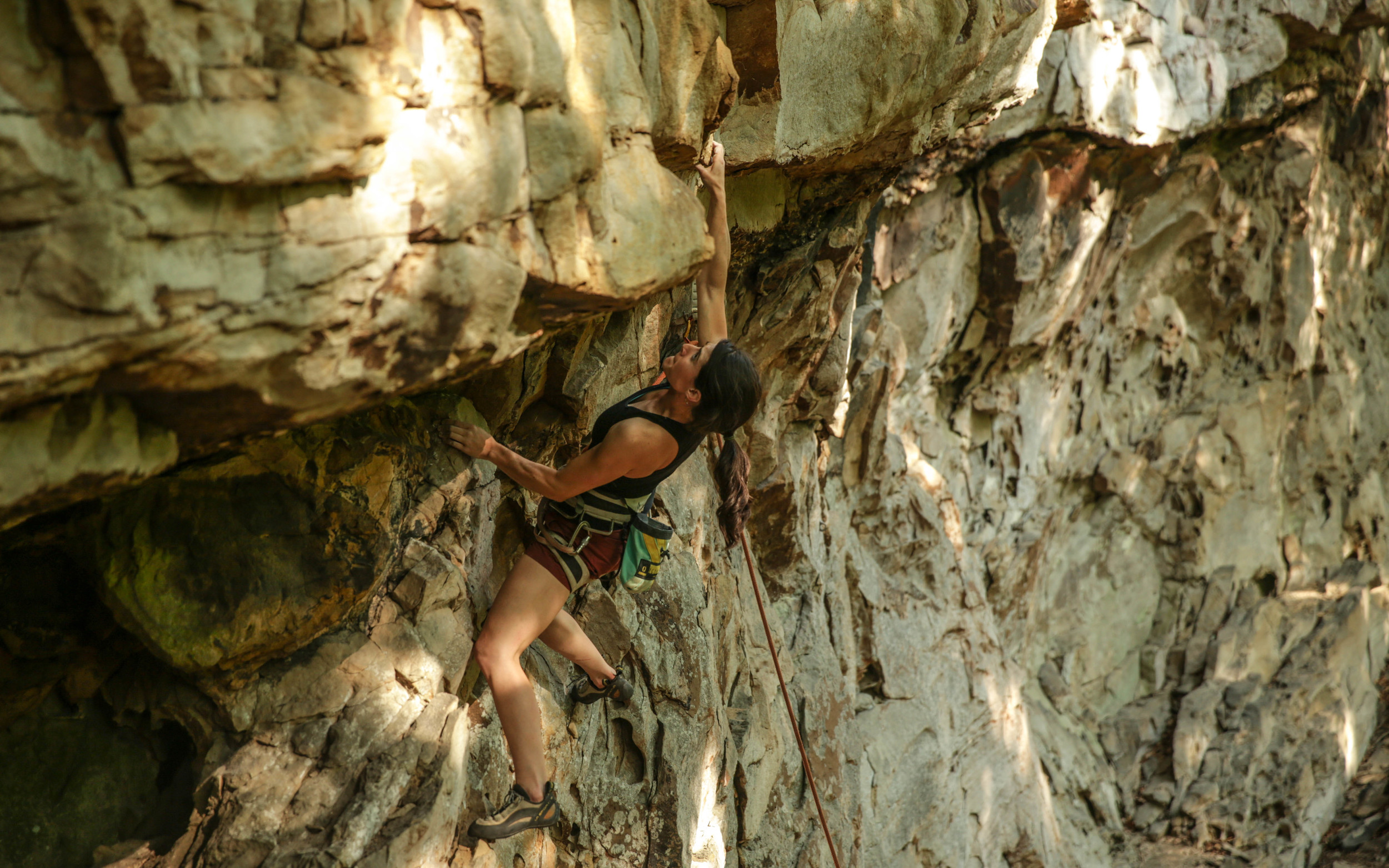A Shared Oasis: World-class rock climbing debuts at The Breaks Interstate Park
Kylie is a native of Pikeville. She loved eastern Kentucky so much she found it hard to leave. She started her undergraduate career at Pikeville College, now the University of Pikeville, but later transferred to the University of Kentucky to pursue a degree in Natural Resources and Environmental Science. She currently works as a Reforestation Coordinator for Green Forests Work , a nonprofit dedicated to re-establishing healthy and productive forests on formerly mined lands in Appalachia.
Photos via EKI Director: Gerry Seavo James
Kylie nearing the anchors on Breaking a Cold Sweat, 5.11+. Photo: Gerry Seavo James
I have always enjoyed the tranquility of Breaks Interstate Park on the border of Kentucky and Virginia. Within two minutes of the trailheads, you’re enveloped in a mature tree canopy buzzing with the sounds of solitude. The trails themselves are faint from infrequent travel and the turns are often washed away from the steep terrain. It’s so easy to lose yourself in the beautiful, rugged scenery. I usually do. And I wonder to myself why more people don’t know about The Breaks. I think it has a lot to do with other visitors feeling the same way about it that I do. Like it’s their own personal oasis, a secret best kept to themselves.
Well, it’s time to share the secret.
Climber and Filmmaker, Nate Spicer captures the first group of sanctioned climbers at Breaks as they head toward the routes along Prospector Trail. Photo: Gerry Seavo James
I’ll never forget the experience that started my obsession with climbing The Breaks. I was on a hike with my family and I almost stepped on a perfectly camouflaged, six-foot-long rattlesnake coiled in the trail.
I was just a little girl at the time, and the near miss put my mom into panic mode. While my older brothers climbed boulders at The Notches rock formation, I was stuck against my will to my mother’s side. I remember thinking to myself, “One day, I’m going to come back here and climb all the rocks I want.”
From the Schmidt Family Archives. Circa 1993. From left to right: the late Covie Schmidt, Kylie's middle brother, maternal grandmother, Grandma Lucy, Kylie, and Cole Schmidt, Kylie's oldest brother. Don't let the pink bow and shirt (didn't get the all black memo) fool you. All she's thinking about is climbing the Towers in the background...and not rubbing Cole the wrong way ("That's not a knife. This is a knife.").
Aside from attempting a very suspect rock wall once a year during Pikeville’s Hillbilly Days festival, I didn’t do much climbing until I was a student at Pikeville College, now the University of Pikeville. But I wasn’t much more than a hobbyist until I moved to Lexington and started working at the University of Kentucky’s climbing gym. While there, I developed the skills I needed to climb outdoors. My friends and I frequented Kentucky’s most famous climbing hotspot, the Red River Gorge, but I always felt the urge to go back to where my desire to climb began: The Breaks.
Kylie getting a shake after pulling onto the vertical face of Breaking a Cold Sweat, 5.11+. Photo: Gerry Seavo James
Kylie strategizing how to transition from the overhanging section to the vertical section on Breaking a Cold Sweat, 5.11+. Photo: Gerry Seavo James
I took what I’d call a reconnaissance trip to The Breaks in 2012. I wanted to look at it with my new climber’s perspective, and I was thrilled with what I found. Several sport routes had already been developed. Assuming (generally a bad idea) that climbing was permitted, I got a crew of Lexington climbers together to explore the new territory. That’s when I met Austin Bradley.
Lexington climbers. From left to right: Kirk Jenkins, Doug Burton, Byron Hemple, Kylie, and Anna Meador. Photo: Kylie Schmidt
Austin is The Breaks’ superintendent. He kindly informed us that climbing was not allowed in the park, but, nice guy that he is, left it at that.
A reporter from Eastern Kentucky Broadcast -TV interviews Austin Bradley, Breaks Interstate Park on the inaugural day of sanctioned rock climbing at the 4,500 acre park shared between the states of Kentucky and Virginia. Photo: Gerry Seavo James
In retrospect, that’s probably when I should have gotten serious about pushing for permitted climbing in The Breaks. It is, after all, where my interests, passions, and talents collide. But, even then, I was still thinking of the place as my secret oasis. I didn’t want to share.
It wasn’t until 2014 that I realized how misguided my selfishness was. At the time, I was working in Lexington on grant projects related to water quality on agricultural lands. My intention had always been to get an education in environmental science so I could address the needs of my home in Appalachia. But, there I was, working on problems that I honestly didn’t know much about in a place that wasn’t my real home. It just didn’t feel right. Then I read an article in a UK newsletter about how the Heritage Council wanted to promote recreational and outdoor tourism in Eastern Kentucky to stimulate the struggling economy, and I felt called to help.
To gain support, I reached out to a local climber and member of the Southwest Virginia Climbers Coalition, Brad Mathisen, who I met on a Mountain Project forum about The Breaks before I took my reconnaissance trip. Brad introduced me to the Regional Director of the Access Fund, Zachary Lesch-Huie. The three of us made an excellent team. I got our foot in the door, Zachary provided the expertise, and Brad supported both efforts along the way. Our team eventually evolved into the Climbing Management Advisory Panel, which consisted of everyone from EMS to peregrine falcon specialists. Every facet of the park now has a voice and is equally heard. All of my fears of potential resource degradation have been allayed by the hard work and sensible approach of the park, namely Austin.
Zachary Lesch-Huie enjoying How Do You Spell Breaks, 5.10a. Photo: Gerry Seavo James
I think The Breaks has set an amazing standard. Cliffs will be opened to development, with only high quality hardware, after biological assessments are conducted, and seasonal closures may take effect due to resource concerns such as nesting peregrine falcons. The cliffs currently open to climbing are the areas that have already been developed. This includes 17 sport routes and 30 traditional routes scattered across the Stateline Overlook, Pinnacle Rock, The Notches, Prospector Trail, and the River Trail. To climb at the park, you must complete a waiver (free) at the Rhododendron Lodge or the Visitor’s Center. More information is available on Mountain Project.
Kylie starting the vertical section on Breaking a Cold Sweat, 5.11+. Photo: Gerry Seavo James.
Kylie on Stage Fright, 5.12. Photo: Gerry Seavo James
The first officially sanctioned group of climbers included myself, Zachary, Travis Rawlings, close friend and Lexington climber, Nate Spicer, Gerry’s friend and filmmaker, Timothy Cleary, Elkhorn City climber who I went to school with, and Gerry Seavo, Director of Explore Kentucky Initiative (but you knew that). That day was euphoric. The rock quality, style of climbing, and exposure are truly incredible. Before climbing my first route, I found myself envisioning some other little girl visiting the park and being inspired by the rocks like I was. Only now that little girl has the opportunity to connect with the landscape in a way I never could. That’s the kind of connection that will give Appalachia’s youth a sense of ownership of their land and mold them into its caring, responsible stewards. At least that’s my hope.
Travis Rawlings looking strong on Breaking a Cold Sweat, 5.11+. Photo: Gerry Seavo James
The first officially sanctioned group of climbers from left to right: Gerry Seavo James, Director of The Explore Kentucky Initiative, Travis Rawlings, a climber and close friend of the author, Kylie Schmidt, Zach Lesh-Huie, Southeast Regional Director & National Affiliate Director for the Access Fund, and Nate Spicer, a climber and filmmaker.
Photo: Gerry Seavo James
The whole experience honestly started an amazing chain reaction in my life. It seems like, when you’re doing what you’re meant to do, things just have a way of falling into place. I now work for a non-profit organization called Green Forests Work that re-establishes native forests on surface mined lands throughout Appalachia. My dream job. I only mention this to encourage others to find that intersection of passion, interest, and talent where true happiness resides.
So what’s next?
Well, I’d love for the introduction of climbing at The Breaks to start the snowball rolling for ecotourism in the area. The potential is vast: unbeatable whitewater rafting, mountain biking, fishing, bird watching, you name it. I hope the people of nearby Elkhorn City and other rural areas in Appalachia can learn to re-envision their relationship with the natural resources that have always been their greatest asset. The time has long since passed for shifting from an exploitative relationship with those resources to a more sustainable one that promotes real economy, fosters environmental respect, and improves the quality of the lives it touches.
It’s time to share our oasis.
